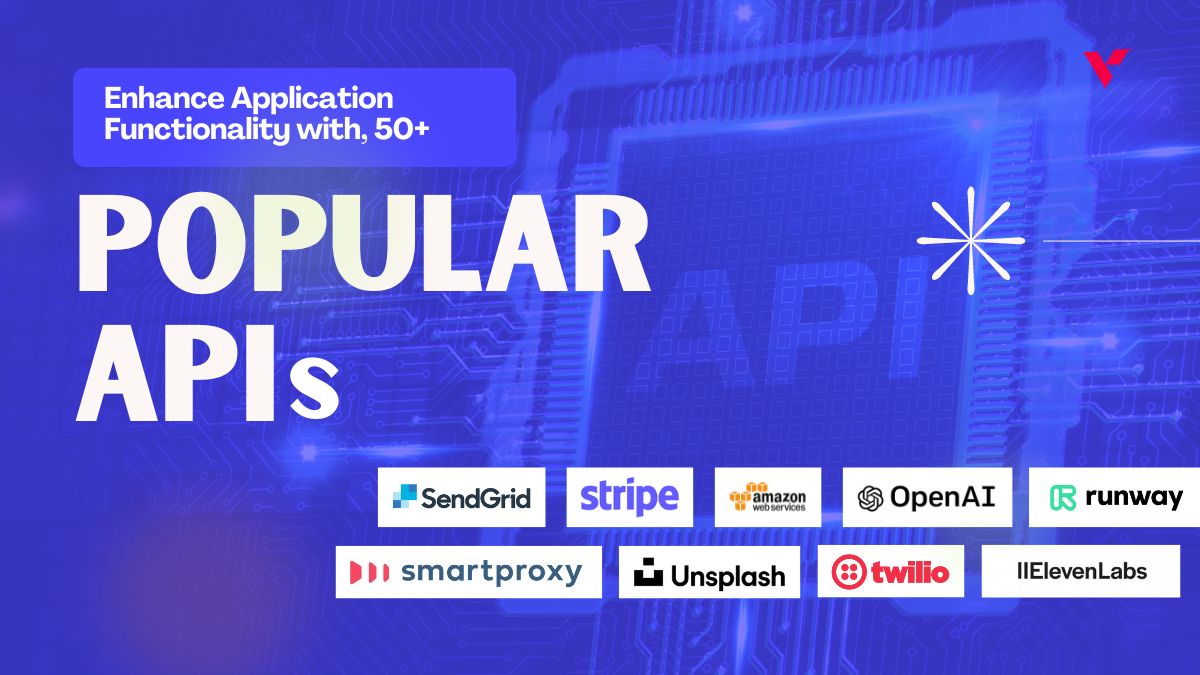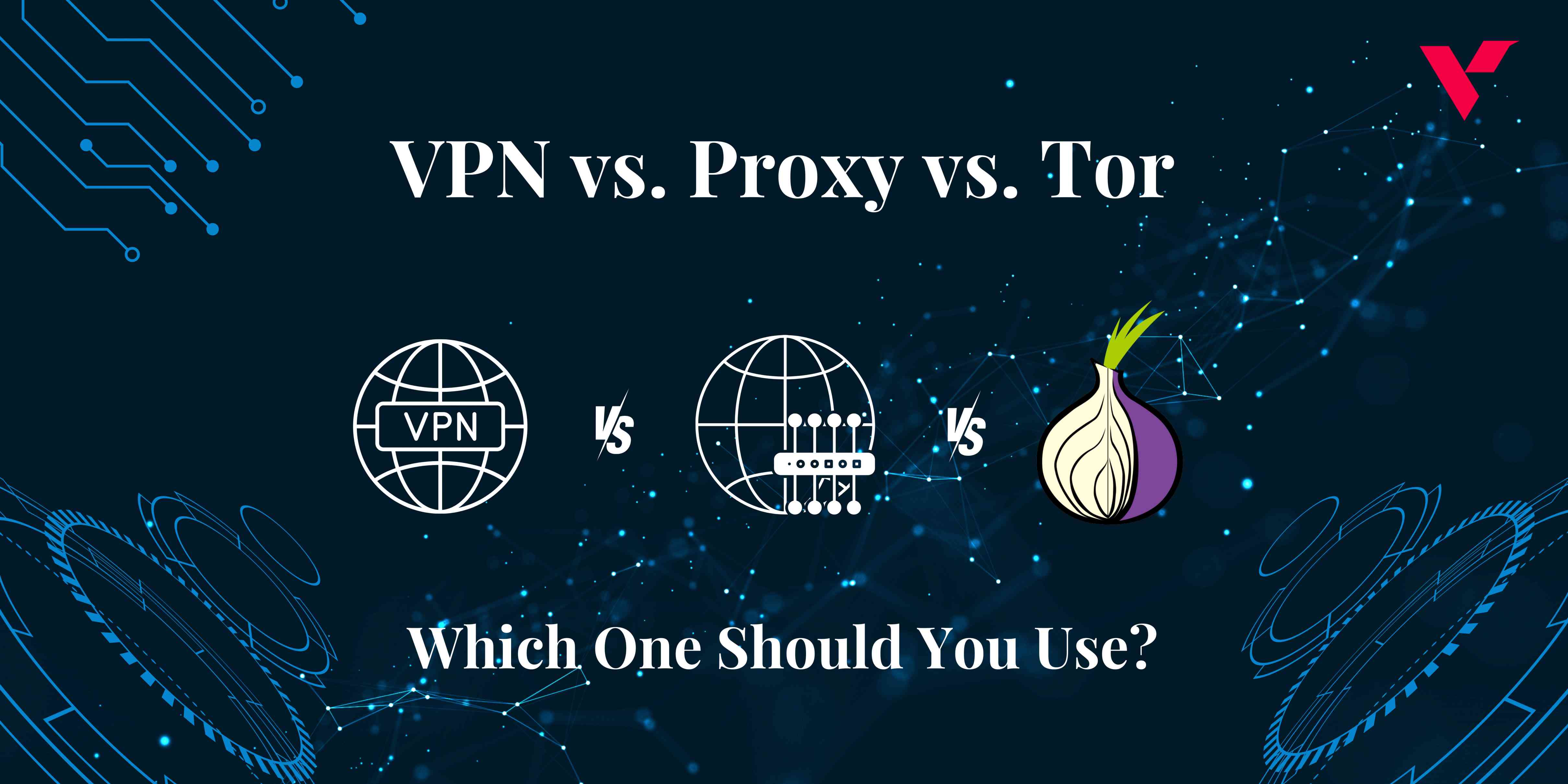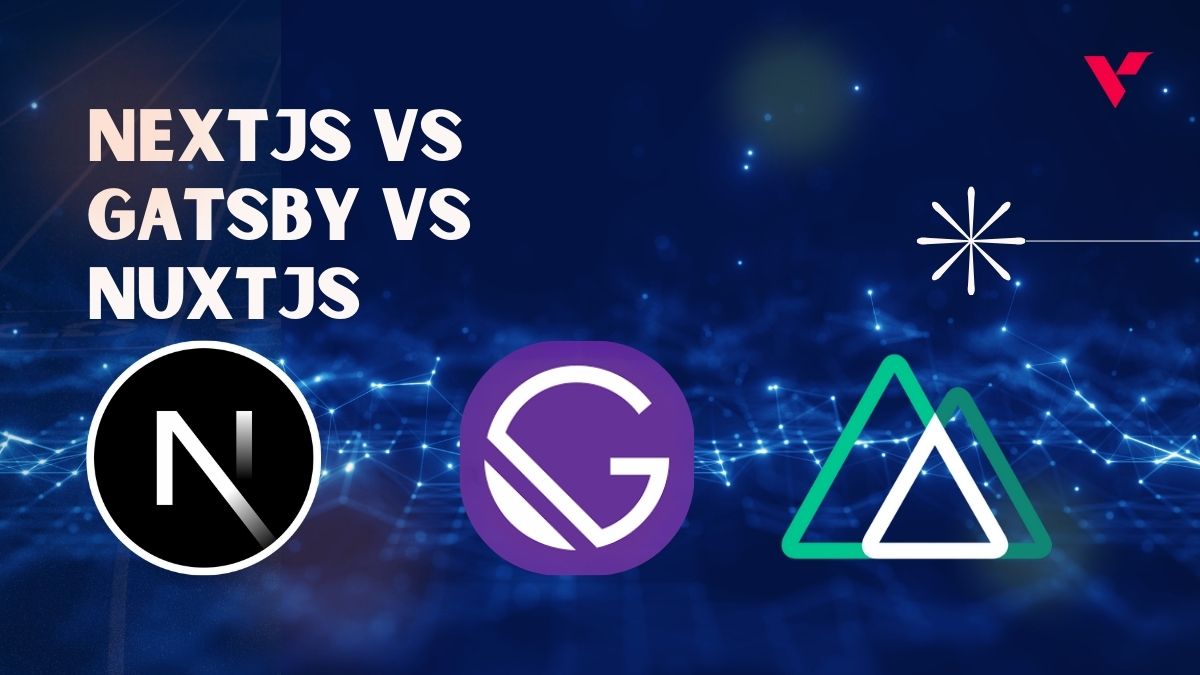Popular Tools by VOCSO
Why waste time building what you can easily integrate? Leveraging ready-made, tried, and tested APIs for different functional needs like payment gateways, generative AI, real-time data feeds, and social logins – can drastically cut development time while boosting your app’s functionality. These API developments let you focus on innovation, ensuring your application delivers a seamless and powerful user experience right out of the gate.
Table of Contents
Benefits of Using APIs
Faster Development: APIs provide pre-built functionalities, saving developers time and effort compared to coding everything from scratch.
Increased Innovation: Developers can focus on unique application features and functionalities instead of reinventing the wheel for common tasks.
Enhanced Functionality: APIs allow integration of external services and data, enabling features like real-time updates, social media logins, or advanced analytics.
Improved User Experience: By incorporating a wider range of features, applications become more user-friendly and engaging.
Reduced Costs: Leveraging APIs can be cost-effective compared to developing features in-house, saving on development resources.
Scalability and Flexibility: APIs allow applications to easily adapt and integrate with new services and data sources as needed.
Increased Efficiency: APIs can automate tasks and workflows, streamlining processes for both developers and users.
Key Categories of APIs
- payment Gateways
- Communication
- Voice Recognition APIs
- Proxy APIs
- Affiliate APIs
- Images APIs
- Shipping & Logistics APIs
- Location Services
- Social Media Integration
- Generative AI APIs
- Entertainment & Media
- Security & Authentication
- Translation APIs
- Weather & Environmental
Payment Gateways
Stripe
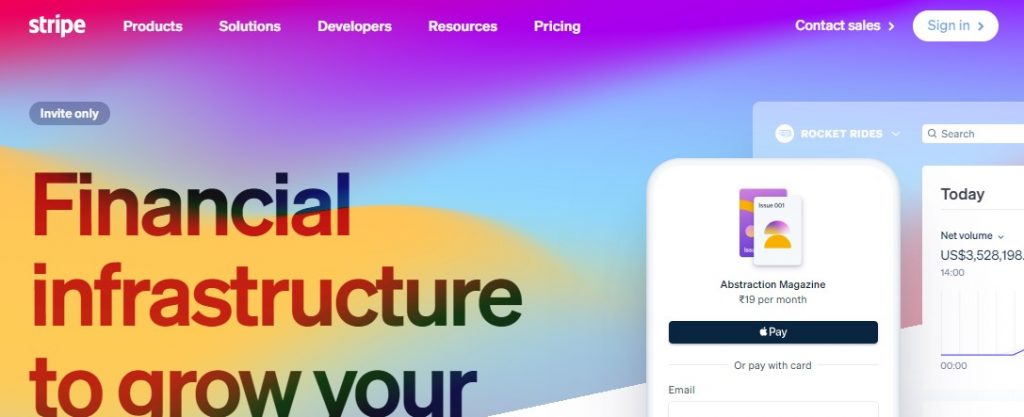
APIs like Stripe provide a seamless way to integrate secure payment gateways into your application. This eliminates the need for developers to build their complex payment infrastructure. With Stripe’s API, users can securely pay for goods and services directly within your application, streamlining the checkout process and increasing conversion rates. This benefits developers by saving them time and resources and creates a smoother user experience for your customers.
PayPal
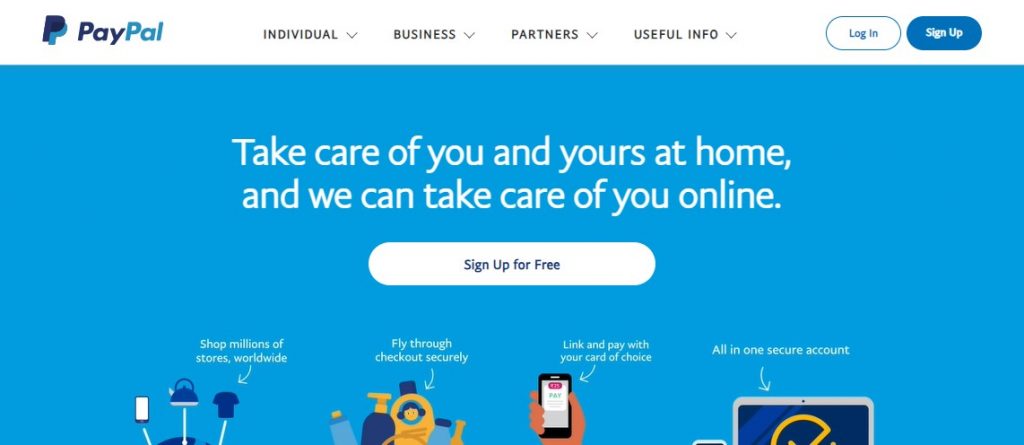
An API that allows for secure integration of the widely recognized PayPal payment gateway directly into your application. This frees developers from the burden of creating their own intricate payment systems. By leveraging PayPal’s API, users can utilize their existing PayPal accounts to make secure in-app purchases, fostering a familiar and trusted checkout experience. This not only benefits developers by streamlining the integration process but also gives users the comfort of a trusted payment method, potentially boosting conversions and user satisfaction.
RazorPay
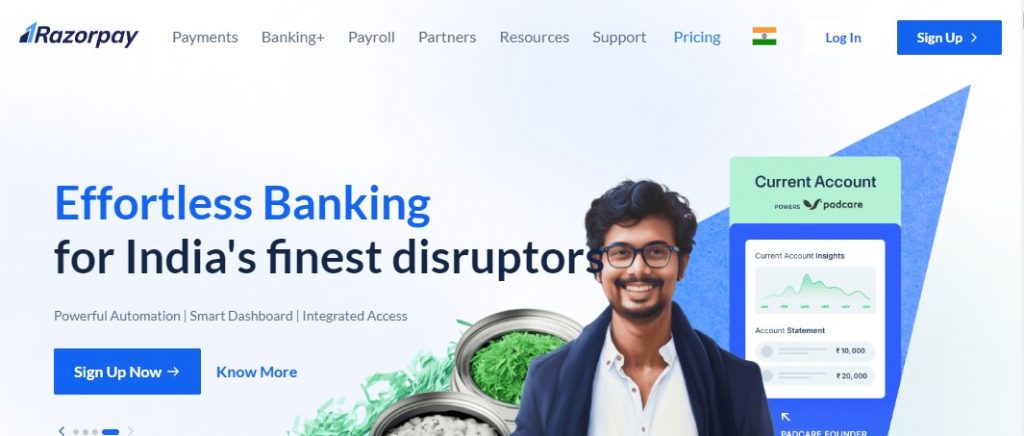
API’s like RazorPay’s API streamlines the process of accepting payments within your application, adhering to local regulations and offering popular Indian payment methods like UPI and mobile wallets. This eliminates the need for developers to navigate complex compliance requirements and integrate various payment options individually. By leveraging RazorPay’s API, you can ensure a smooth checkout experience tailored to Indian users, potentially increasing conversion rates and user satisfaction within the Indian market.
PayUMoney
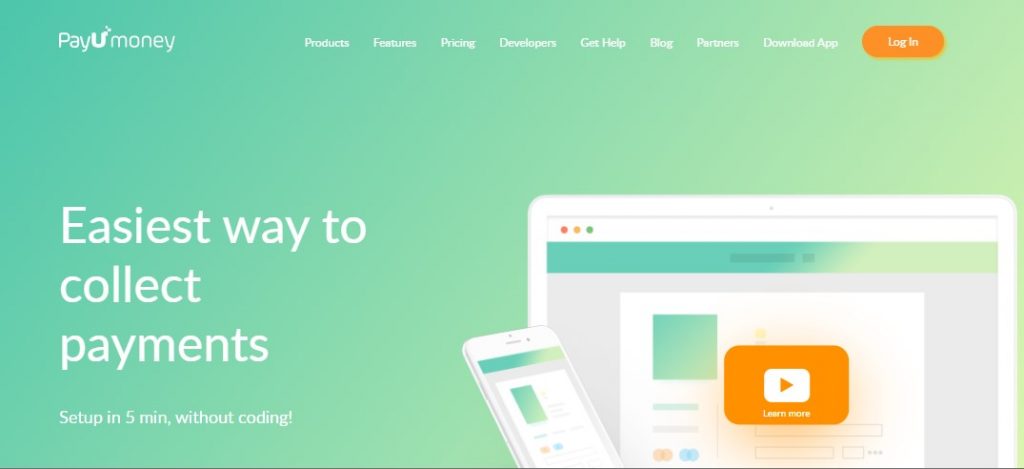
An API that allows for secure integration of PayUMoney payment gateway into your application. This streamlines the process for developers, eliminating the need to build their payment infrastructure and navigate the complexities of adhering to Indian financial regulations. PayUMoney’s API offers a wide range of popular Indian payment options, including UPI, wallets, debit/credit cards, and net banking. This ensures a familiar and convenient checkout experience for Indian users, potentially boosting conversion rates and user satisfaction within the region.
Case Study – PayUMoney
PayUMoney, a leading Indian payment gateway provider, faced a challenge – equipping businesses with the tools to seamlessly accept online payments. Their solution? A robust API. By developing a user-friendly API, PayUMoney empowered businesses to integrate their payment gateway directly into their applications. This eliminated the burden of building complex in-house payment systems and ensured compliance with Indian financial regulations. Furthermore, the API offered a comprehensive suite of popular Indian payment options like UPI, mobile wallets, and net banking, catering to the preferences of Indian consumers. This not only streamlined the development process for businesses but also provided a familiar and convenient checkout experience for users, ultimately driving increased online transactions and user satisfaction within the Indian market.
Communication APIs
AWS SES
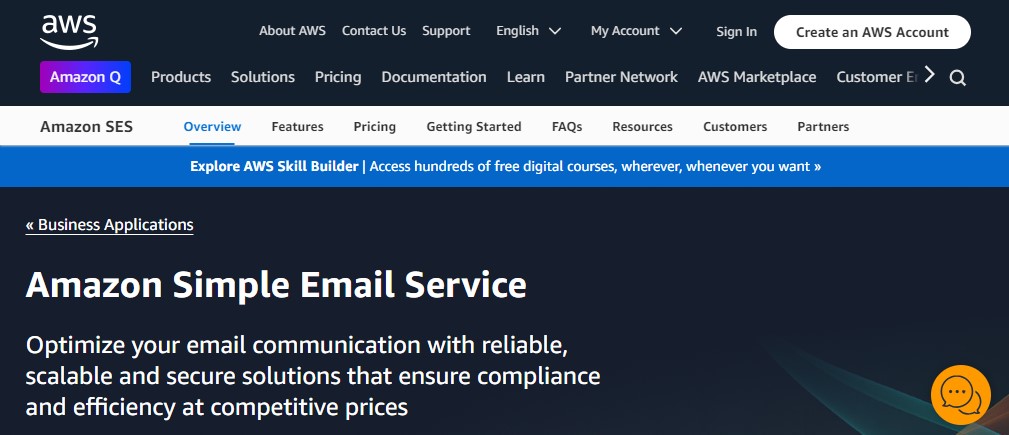
This API empowers developers to integrate reliable email-sending capabilities directly into their applications. Bypassing the need for managing on-premise email servers, developers can leverage SES to send transactional emails like password resets or marketing campaigns. This API offers features like content filtering to ensure email deliverability and integrates seamlessly with other AWS services. This not only simplifies email management for developers but also ensures users receive important messages promptly and securely, contributing to a more positive user experience.
Twilio
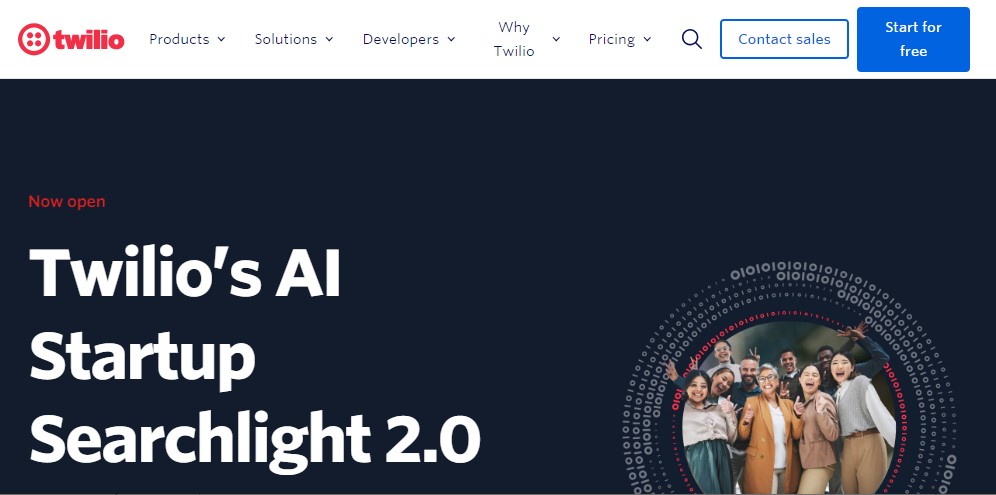
Twilio’s API grants developers the ability to effortlessly integrate multi-channel communication features like SMS, voice calls, and even video conferencing directly into their applications. This eliminates the need for developers to build their own communication infrastructure, saving time and resources. Furthermore, Twilio’s API supports a vast array of functionalities, allowing developers to incorporate two-way SMS for user verification, real-time notifications via voice calls, or even integrate with popular messaging platforms like WhatsApp. This flexibility empowers developers to create applications that can interact with users in various ways, ultimately fostering a more engaging and interactive user experience.
SendGrid
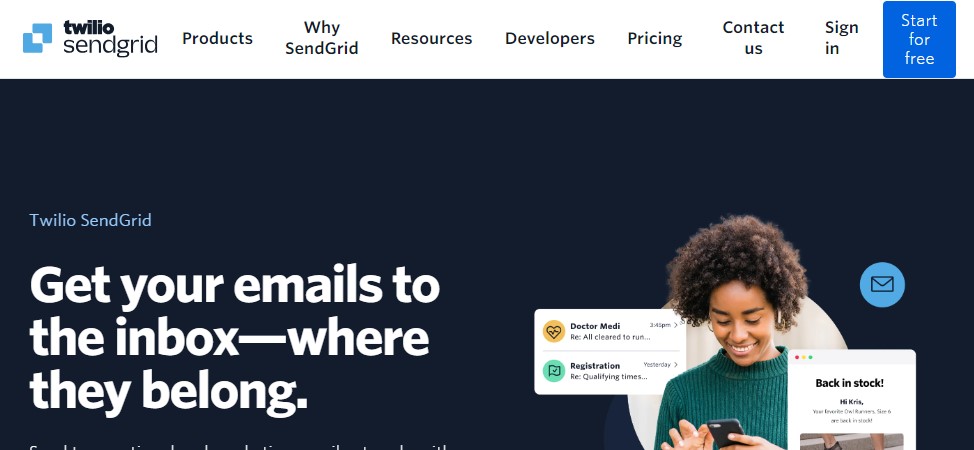
Their API allows developers to seamlessly integrate robust email-sending capabilities directly into their applications. This eliminates the need for developers to manage complex email servers or rely on unreliable third-party services. The SendGrid API empowers developers to send various types of emails, from transactional confirmations to targeted marketing campaigns. It boasts features like email personalization, A/B testing for optimizing content, and real-time analytics to track campaign performance. This not only simplifies email management for developers but also ensures emails land in inboxes and resonate with users, contributing to a more effective and data-driven communication strategy.
Mailchimp
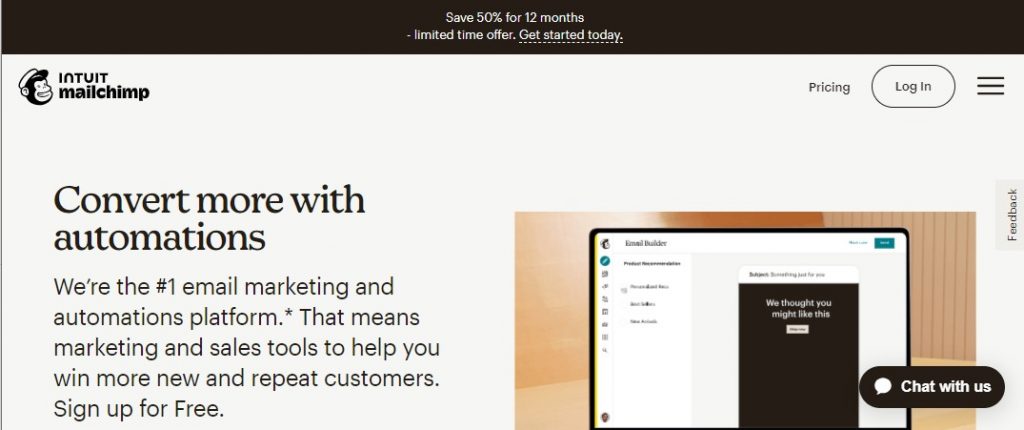
This API allows developers to bypass the need for a separate email marketing platform, streamlining the development process. Through Mailchimp’s API, developers can leverage features like subscriber list management, email campaign creation and scheduling, and even automated email workflows directly within their applications. This empowers developers to create targeted email marketing experiences for users without leaving their applications. Additionally, Mailchimp’s API offers robust analytics and reporting, allowing developers to track campaign performance and optimize communication strategies for better user engagement.
Slack API
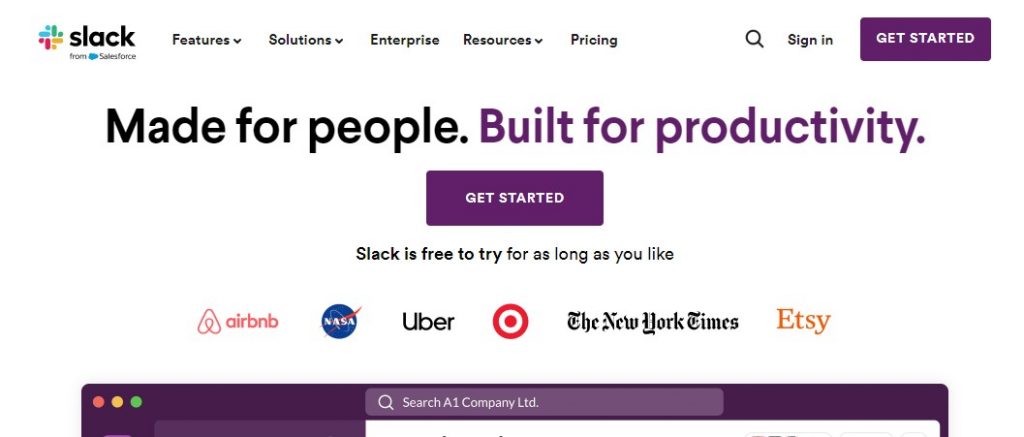
This API allows developers to integrate functionalities directly with the popular collaboration platform, Slack. Imagine your application notifying users about important updates or triggering workflows directly within their Slack channels. The Slack API empowers this by enabling features like sending messages, creating notifications, and even interacting with buttons and menus within Slack. This not only fosters a more contextual and interactive user experience but also keeps users informed and engaged within their preferred communication hub, streamlining collaboration and information flow.
Case Study – AWS SES
EcomBlast, a booming e-commerce platform, faced a critical challenge: their on-premise email server struggled to keep pace with their ever-growing customer base. Sending mass marketing campaigns and transactional emails resulted in slow delivery times and frustrated users. To address this bottleneck, EcomBlast turned to Amazon’s Simple Email Service (SES) API.
Integrating the SES API allowed EcomBlast to seamlessly migrate their email operations to the cloud. This eliminated the need to maintain costly in-house infrastructure and ensured scalability to handle their increasing email volume. Furthermore, SES’s robust features like content filtering improved email deliverability, ensuring important messages landed in customer inboxes. This not only streamlined email management for EcomBlast’s development team but also guaranteed timely communication with their customer base. As a result, EcomBlast experienced a significant improvement in email delivery rates and a reduction in operational costs. More importantly, their customers received critical updates and marketing promotions promptly, contributing to a more positive user experience and overall business growth.
Voice Recognition APIs
Google Speech-to-Text
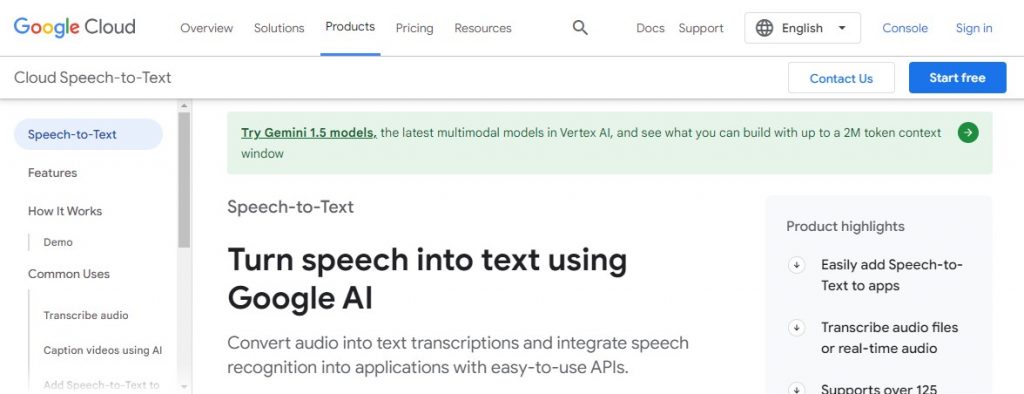
This API empowers developers to integrate powerful speech recognition capabilities directly into their applications. Users can speak commands, dictate text, or interact with the application through voice, offering a more natural and intuitive user experience. Google’s Speech-to-Text API boasts high accuracy for various languages and accents, along with features like speaker diarization and real-time transcription. This not only allows developers to create innovative voice-driven applications but also caters to users who prefer voice interaction, potentially increasing accessibility and user satisfaction.
Amazon Lex
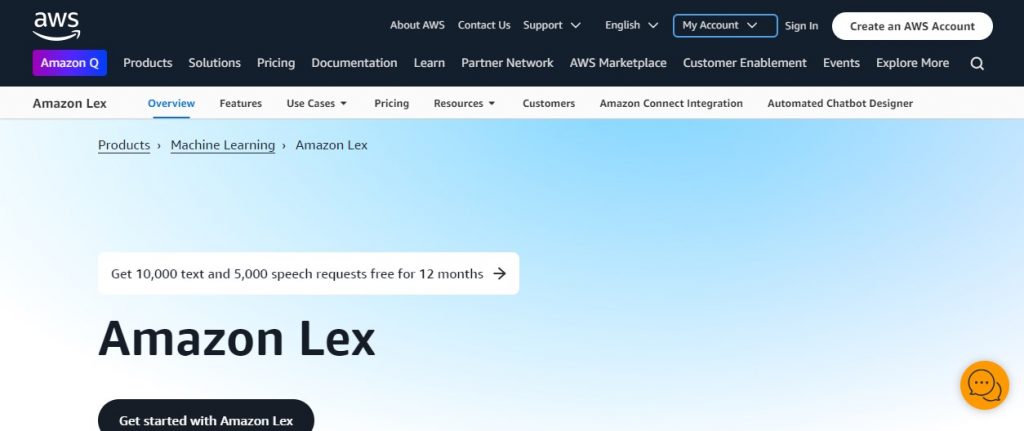
An API that goes beyond simple speech-to-text by incorporating Natural Language Understanding (NLU) capabilities. With Amazon Lex, developers can design applications that understand the intent behind a user’s spoken words. This allows for natural and interactive voice experiences where users can ask questions, provide instructions, or navigate the application through voice commands. Amazon Lex offers pre-built functionalities for common use cases and allows developers to customize the conversation flow for their specific application. This empowers developers to create applications that can truly converse with users, fostering a more engaging and user-friendly experience.
IBM Watson Text-to-Speech
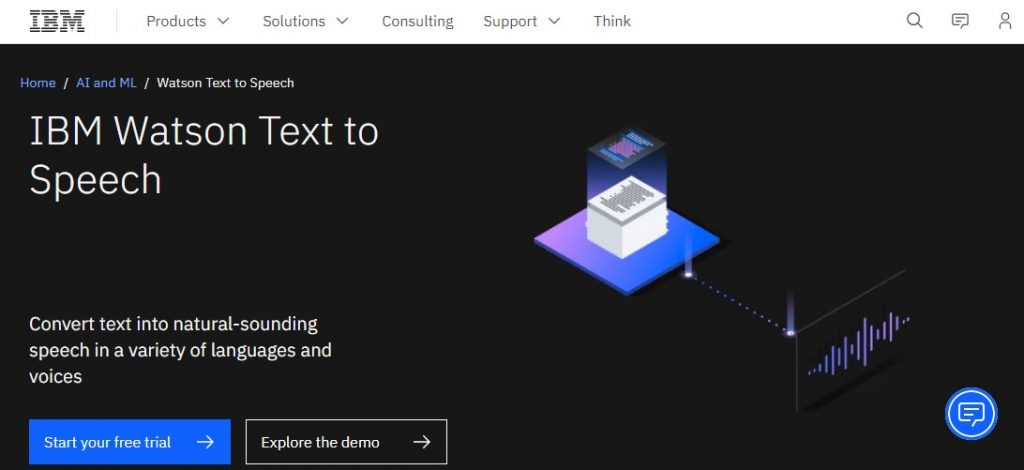
This API empowers developers to add a voice to their applications by converting written text into natural-sounding speech. Imagine your application narrating instructions, providing audio updates, or even personalizing greetings for users. Watson Text to Speech offers a wide range of voices and languages, allowing developers to cater to diverse user preferences. Additionally, it supports customization options like pitch and cadence adjustments, enabling developers to create a brand-specific voice personality. By integrating this API, developers can create a more interactive and engaging user experience, particularly for visually impaired users or those who prefer audio consumption of information.
OpenAI Whisper
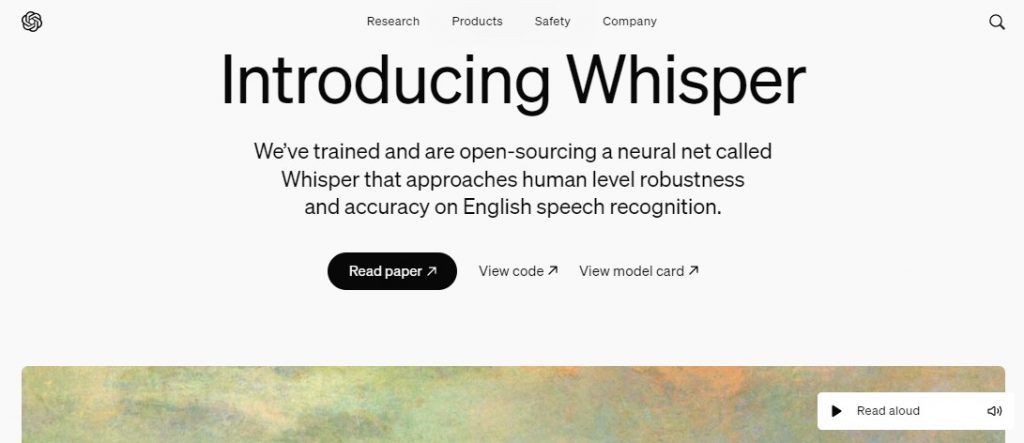
This API excels at transcribing speech into text, but it can also perform multilingual translation and identify spoken languages. This broader functionality empowers developers to create applications with a wider range of capabilities. Imagine an application that translates spoken conversations in real-time, removes language barriers for a global audience. Additionally, Whisper offers competitive pricing compared to other voice recognition APIs, making it a budget-friendly option for developers. This combination of versatility and affordability positions OpenAI Whisper as a compelling option for enhancing application functionality in the realm of voice interaction.
Proxy APIs
ScrapingBee
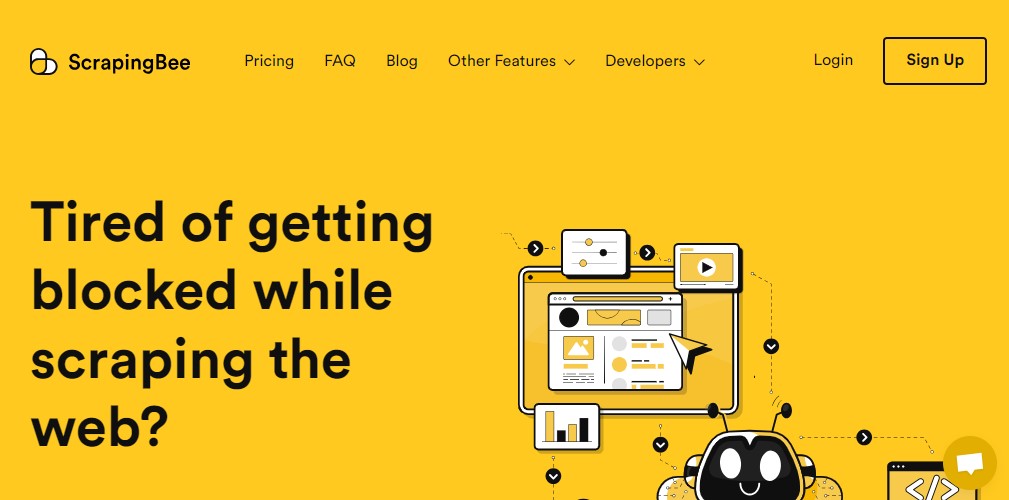
This API offers a valuable solution for developers seeking to collect data efficiently and ethically or for web scraping. Web scraping involves extracting data from websites, but some sites have restrictions in place to prevent this. ScrapingBee acts as a middleman, providing developers with a pool of rotating proxies. These proxies disguise the true identity of the application, allowing it to bypass scraping restrictions and access website data without being blocked. Furthermore, ScrapingBee offers features like Javascript rendering to handle complex webpages and CAPTCHA solving to overcome automated challenges. This not only simplifies the scraping process for developers but also ensures they can ethically collect data while respecting website terms of service. By leveraging a Proxy API, developers can unlock valuable data for their applications, fostering innovation and data-driven decision-making.
Smartproxy
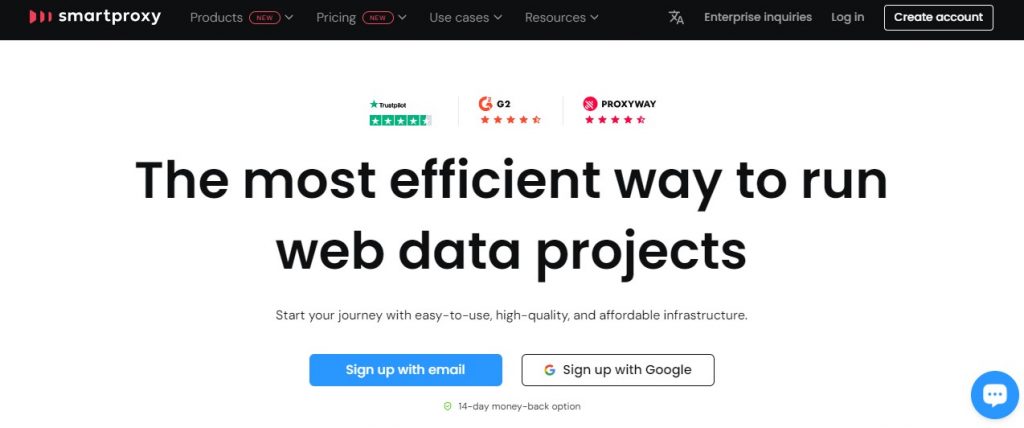
This Proxy API,Smartproxy empowers developers in the realm of web data acquisition by offering a reliable and ethical solution for information gathering. Unlike traditional web scraping methods that can be unreliable or violate website terms of service, Smartproxy provides a pool of constantly rotating residential and datacenter proxies. These proxies act as a cloak, masking the true identity of your application and allowing it to bypass scraping restrictions and access valuable website data. Smartproxy goes beyond basic proxying by offering features like CAPTCHA solving to overcome automated challenges and JavaScript rendering to handle complex webpages. This not only streamlines the data collection process for developers but also ensures they can ethically gather information while respecting website regulations. By leveraging a Proxy API like Smartproxy, developers can unlock valuable data for their applications, fueling innovation and data-driven decision-making.
Oxylabs
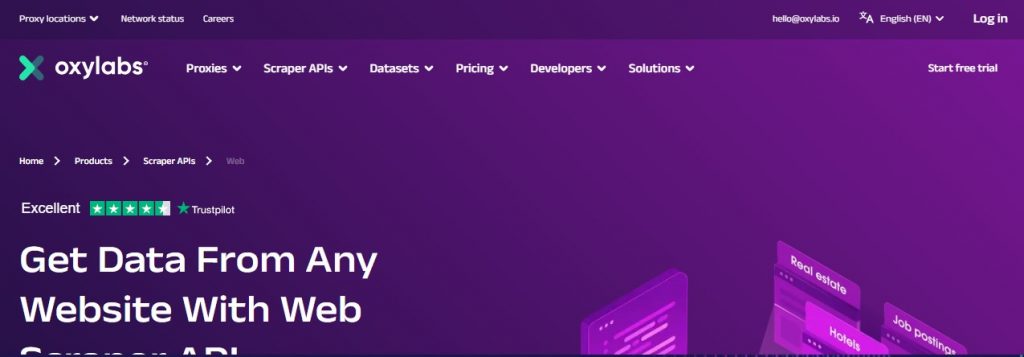
This Proxy API, like Oxylabs, equips developers with a powerful tool to navigate the complexities of web scraping. Oxylabs offers a pool of diverse proxies, including residential and datacenter options, that act as a shield for your application. By masking its true identity, these proxies allow your application to bypass scraping restrictions and access valuable website data without violating terms of service. Oxylabs goes beyond basic proxying by providing advanced features like CAPTCHA solving and JavaScript rendering, ensuring smooth data collection even from intricate websites. This not only simplifies the scraping process for developers but also empowers them to ethically gather information while respecting website regulations. By leveraging a Proxy API like Oxylabs, developers can unlock a wealth of data to fuel innovation and data-driven decision making within their applications.
ProxyCrawl
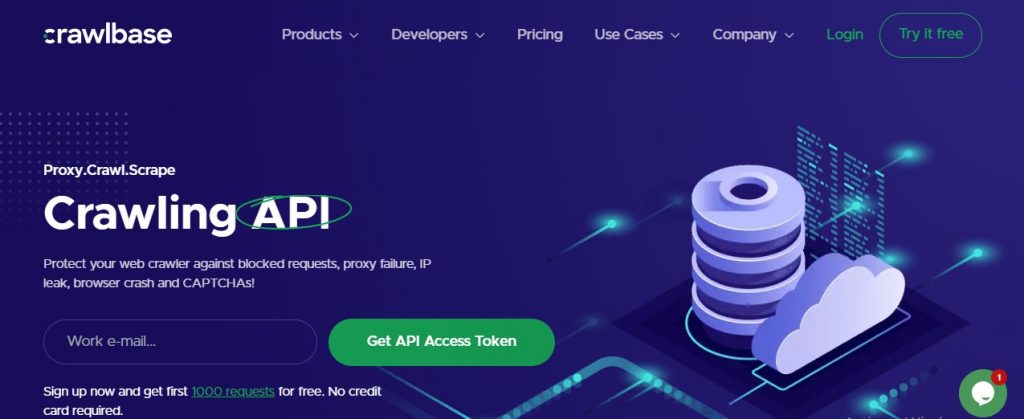
This Proxy API, like Oxylabs, offers a sophisticated approach to ethical and efficient data collection in the arena of web data acquisition. Unlike traditional scraping methods that can be unreliable or downright disruptive, Oxylabs provides a dynamic pool of residential and datacenter proxies. These proxies act as a disguise, masking your application’s true identity and allowing it to bypass scraping restrictions to access valuable website data without raising red flags. Oxylabs goes beyond basic proxying by offering advanced features like CAPTCHA solving and JavaScript rendering, ensuring smooth data collection even from complex websites. This not only streamlines the scraping process for developers but also empowers them to ethically gather information while adhering to website regulations. By leveraging a Proxy API like Oxylabs, developers can unlock a treasure trove of data to fuel innovation and data-driven decision making within their applications.
Case Study – ScrapingBee
Acme Insights, a leading market research firm, faced a challenge: manually gathering data from competitor websites was time-consuming and prone to errors. Extracting product information, pricing updates, and market trends required significant resources. To address this bottleneck, Acme Insights turned to ScrapingBee, a Proxy API solution. Integrating ScrapingBee’s API allowed Acme Insights to automate the data collection process. By leveraging a pool of rotating proxies, ScrapingBee bypassed website scraping restrictions and ethically accessed competitor data. Furthermore, ScrapingBee’s features like JavaScript rendering ensured data extraction even from complex websites. This not only saved Acme Insights valuable time and resources but also improved data accuracy and consistency. With timely access to competitor insights, Acme Insights could provide their clients with more comprehensive market analysis and strategic recommendations. This ultimately enhanced their competitive edge and fueled data-driven decision making for their clients.
Affiliate APIs
Amazon Associates
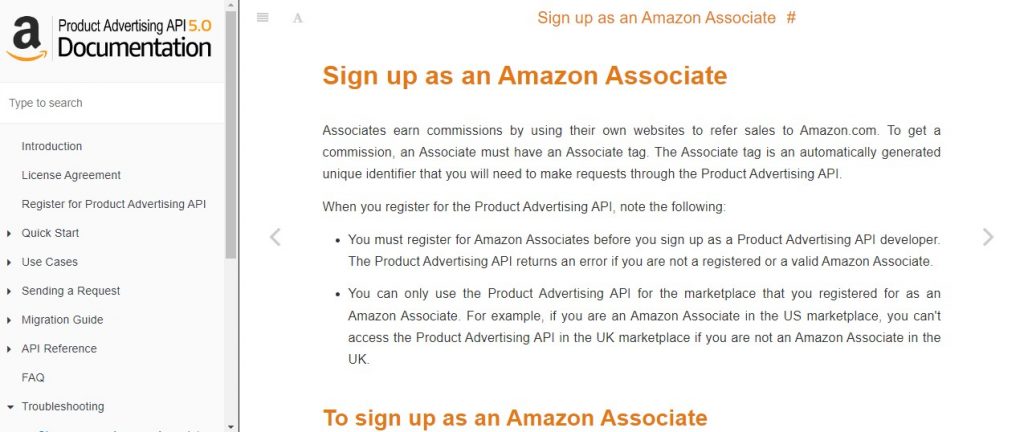
This API allows developers to seamlessly connect their applications to Amazon’s vast product catalog. By displaying relevant product recommendations or showcasing targeted Amazon deals within their application, developers can leverage Amazon’s brand recognition and product selection to generate revenue through affiliate commissions. The Amazon Associates API empowers developers with functionalities like product search, detail retrieval, and shopping cart linking. This not only simplifies integration but also ensures a smooth user experience where users can discover and purchase products directly within the developer’s application. Ultimately, Affiliate APIs like Amazon Associates create a win-win situation for developers, who can generate revenue from user purchases, and users, who benefit from a convenient shopping experience within their preferred applications.
Commission Junction
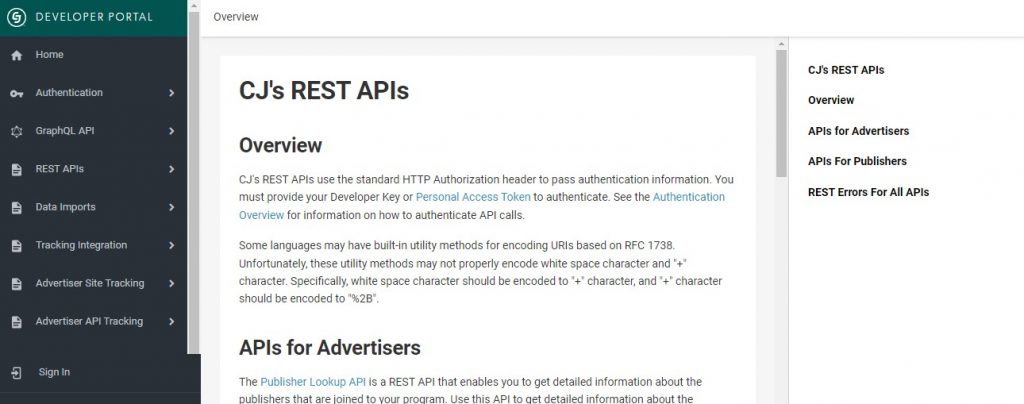
This API allows developers to integrate product recommendations and promotions from a variety of advertisers directly within their applications. By leveraging CJ’s extensive network, developers can offer users a wider selection of products and cater to a broader range of interests, potentially increasing user engagement and revenue opportunities. The Commission Junction API empowers developers with functionalities like product search, advertiser lookup, and commission tracking. This streamlined integration not only simplifies the process for developers but also ensures users have a seamless experience discovering and purchasing products directly within the application. Ultimately, Affiliate APIs like CJ create a win-win situation for developers who can tap into a diverse pool of advertisers, and users who benefit from a convenient and personalized shopping experience.
Rakuten Marketing
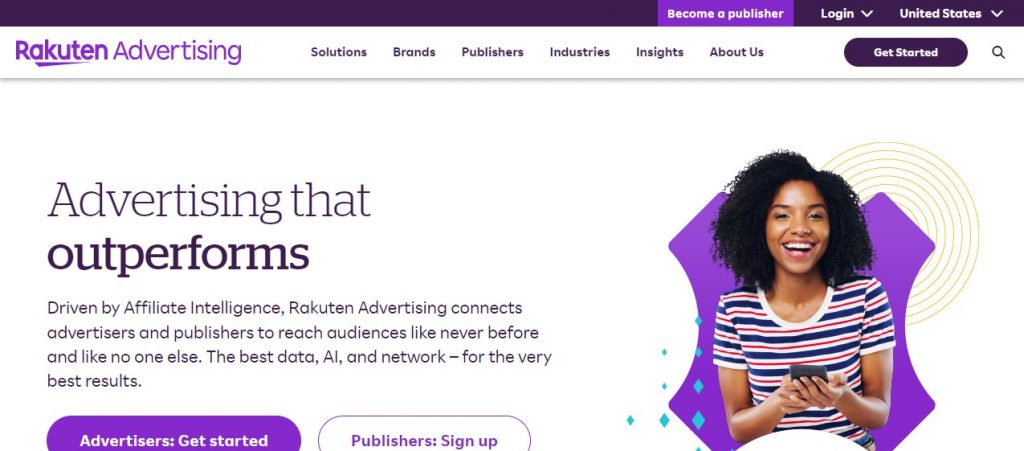
This API grants developers seamless integration with Rakuten, a dominant e-commerce platform in Japan and other Asian countries. By leveraging Rakuten’s extensive product catalog and established brand recognition, developers can integrate targeted product recommendations or promotions directly within their applications. The Rakuten Marketing API empowers developers with functionalities like product search, real-time inventory checks, and deep linking for a smooth user experience. This allows users to discover and purchase products directly from within the developer’s application, all while generating revenue for the developer through affiliate commissions. Ultimately, Rakuten Marketing’s API fosters a win-win situation: developers gain access to a lucrative Asian market, and users benefit from a convenient in-app shopping experience with a trusted brand.
Awin
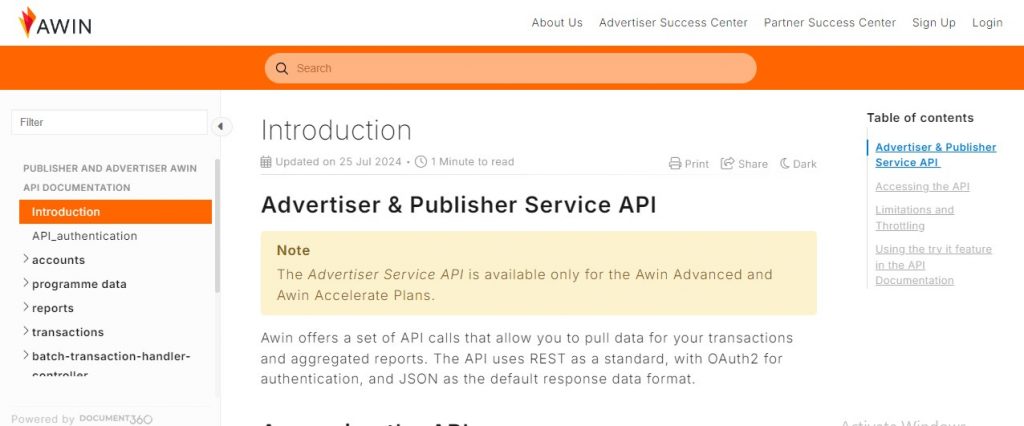
This Affiliate API, like Awin, offers developers a gateway to a network of established European brands. Unlike single-retailer APIs, Awin acts as a bridge, connecting developers to a multitude of advertisers across various sectors. Through Awin’s API, developers can effortlessly integrate targeted product recommendations and promotions directly within their applications. This access to a diverse pool of European advertisers allows developers to cater to a broader user base with specific interests, potentially boosting user engagement and revenue generation. The Awin API empowers developers with functionalities like product search, performance tracking, and link generation for seamless integration. This ensures a smooth user experience where users can discover and purchase products directly within the application. Ultimately, Affiliate APIs like Awin create a mutually beneficial situation: developers gain access to a network of reputable European advertisers, and users enjoy a convenient in-app shopping experience with trusted brands.
Case Study – Amazon Associates
The Road Trip Diaries, a popular travel blog struggling with monetization, aimed to generate income without compromising user experience. The solution? Leveraging the Amazon Associates API. This API allowed them to seamlessly integrate relevant travel products like guidebooks, backpacks, and travel accessories directly into their blog posts. By showcasing these products alongside captivating travel content, The Road Trip Diaries offered valuable recommendations to their audience while generating affiliate income through Amazon purchases. The Amazon Associates API facilitated product search, detail retrieval, and easy linking within blog posts. This ensured a smooth user experience where readers could discover and purchase recommended travel essentials without leaving the blog. Ultimately, by integrating the Amazon Associates API, The Road Trip Diaries created a new revenue stream without disrupting their content or user experience. This not only benefited the blog financially but also provided readers with a convenient way to find the perfect travel gear for their next adventure.
Images APIs
Unsplash API
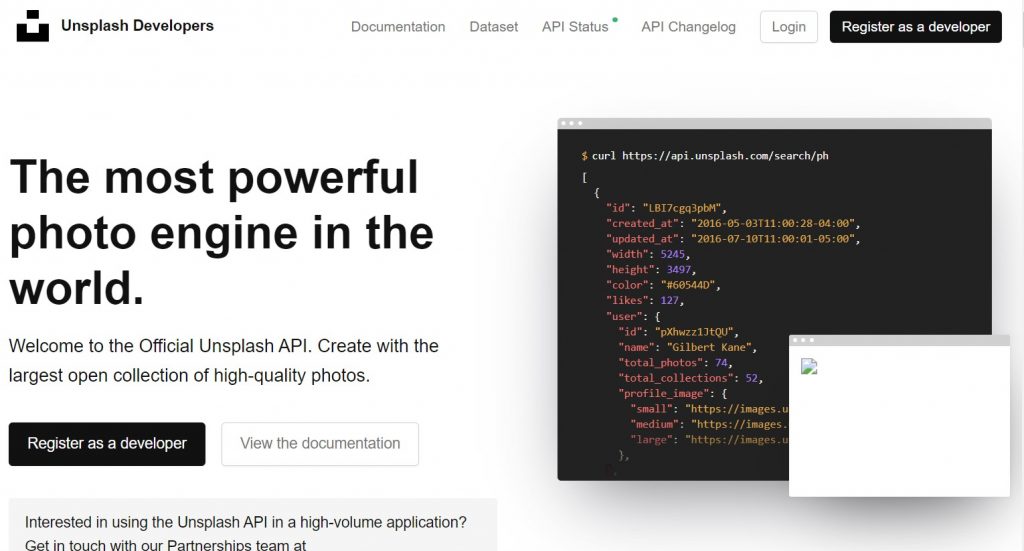
This API grants developers access to a vast library of stunning, high-resolution images, all completely free to use and modify for commercial purposes. Unlike traditional stock photo services with licensing fees, the Unsplash API empowers developers to integrate a dynamic stream of royalty-free images directly into their applications. This allows developers to personalize user experiences with relevant visuals, add a touch of professionalism to their interfaces, or even create dynamic content based on user preferences. The Unsplash API offers functionalities like keyword search, category browsing, and image size adjustments, ensuring developers can find the perfect visuals to complement their applications. By incorporating the Unsplash API, developers can elevate the visual experience for their users and create applications that are both functional and aesthetically pleasing.
Shutterstock API
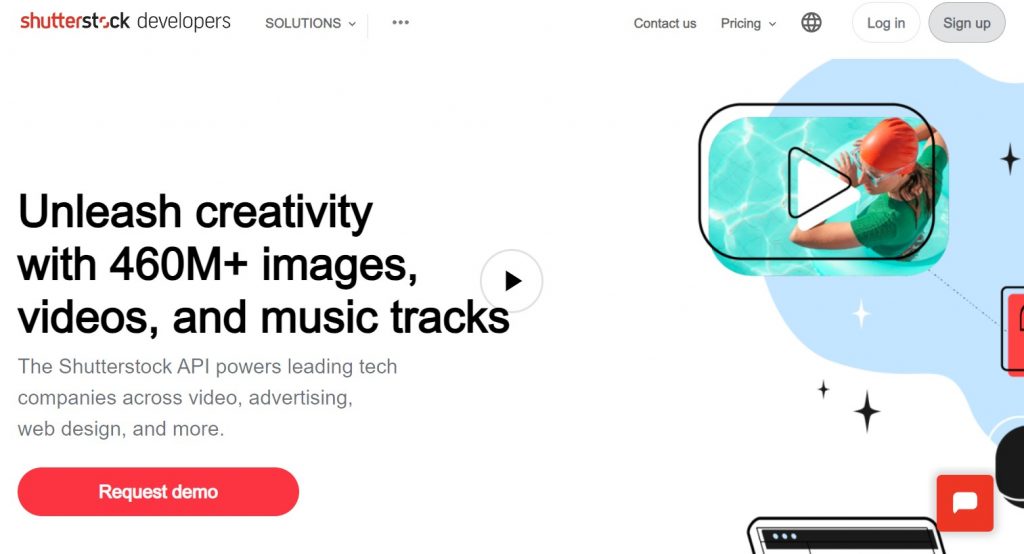
This image API, like Shutterstock, offers a compelling alternative for developers seeking a wider selection of high-quality visuals. While free options like Unsplash are valuable, Shutterstock’s API grants access to a massive library of royalty-free and premium stock photos, illustrations, and vectors. This extensive collection empowers developers to incorporate a broader range of creative assets directly within their applications. The Shutterstock API caters to diverse needs, offering functionalities like keyword search, advanced filtering by style or license type, and image size adjustments. This ensures developers can find the perfect visual element to match their application’s design and functionality. By leveraging the Shutterstock API, developers can create applications with a polished and professional look and feel, potentially boosting user engagement and brand perception.
Adobe Stock API
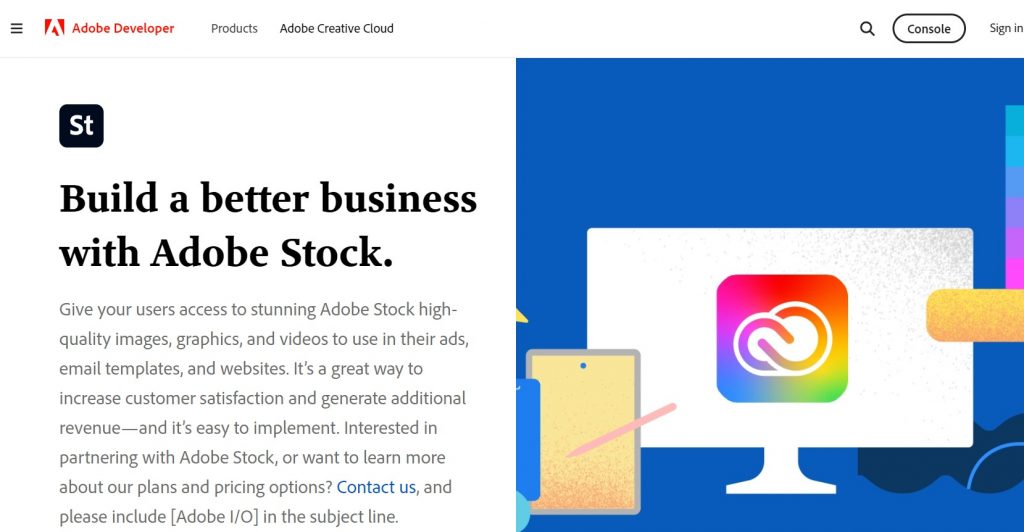
This empowers developers to incorporate high-quality creative assets directly within their applications, without ever leaving the Adobe ecosystem. The Adobe Stock API boasts functionalities like keyword search, advanced filtering by category or license type, and integration with other Adobe Creative Cloud tools like Photoshop or Illustrator. This streamlined workflow ensures developers can not only find the perfect visual element but also seamlessly edit and integrate it within their application. By leveraging the Adobe Stock API, developers can create applications with a polished and undeniably professional look and feel, potentially boosting user engagement and brand perception.
Pexels API
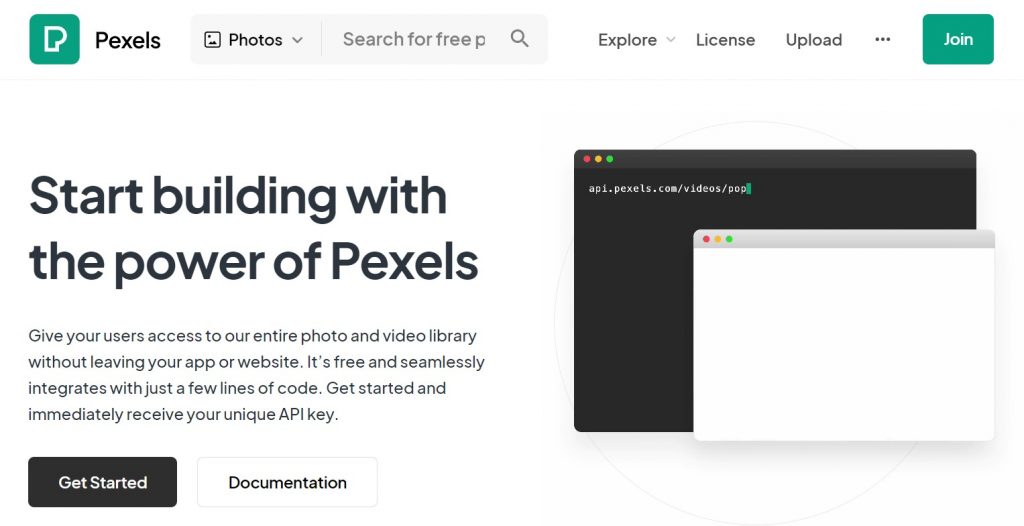
This empowers developers to integrate a dynamic stream of curated visuals directly into their applications, adding a touch of professionalism and enhancing the user experience. The Pexels API offers functionalities like keyword search, category browsing, and image size adjustments, making it easy for developers to find the perfect royalty-free visuals to complement their applications. By incorporating the Pexels API, developers can elevate the visual appeal of their applications without breaking the bank, fostering a more engaging and visually-appealing user experience.
Case Study – Pexels API
Enhancing User Engagement for a Travel Recommendation App Wanderlust, a travel recommendation app, faced a challenge: their interface felt generic and lacked the visual appeal to truly inspire users. To create a more immersive user experience, Wanderlust sought a cost-effective solution for high-quality visuals. The answer? The Pexels API. This API provided them with access to a vast library of stunning, royalty-free travel photos. By integrating the Pexels API, Wanderlust could dynamically display images that corresponded to specific destinations or travel themes within their app. This visual enrichment not only transformed the app’s aesthetics but also sparked user engagement. Users were more captivated by the beautiful travel imagery, leading to increased exploration within the app and ultimately, more trip bookings. The Pexels API offered functionalities like keyword search and category browsing, ensuring Wanderlust could find the perfect visuals to complement each destination. By leveraging this free API, Wanderlust created a visually inspiring and user-friendly experience, ultimately driving user engagement and business growth.
Shipping & Logistics APIs
ShipRocket
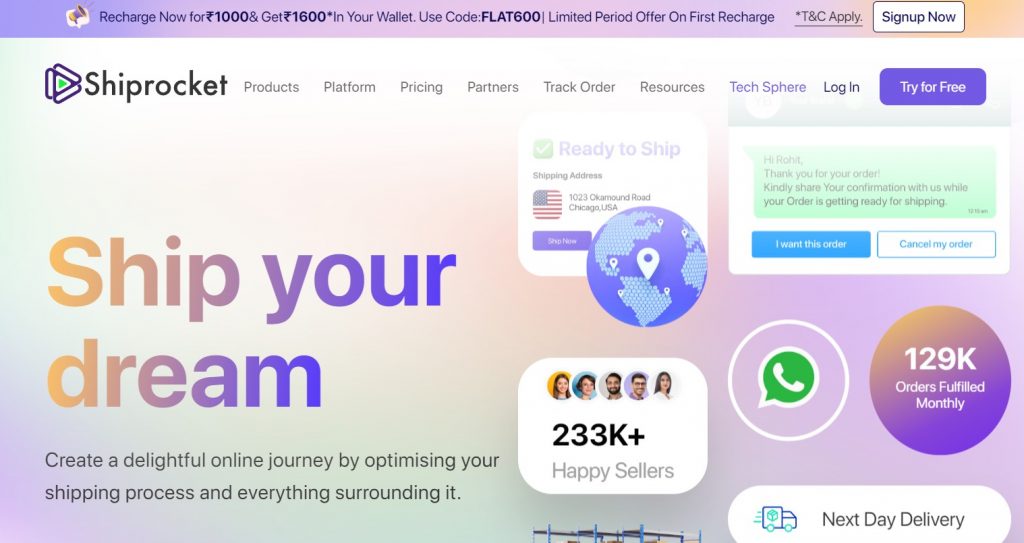
This Shipping & Logistics API, like ShipRocket, offers a powerful tool for businesses to streamline their e-commerce fulfillment process. Imagine seamlessly integrating shipping functionalities directly into your online store. This is what ShipRocket’s API enables. By connecting to their API, businesses can automate tasks like generating shipping labels, comparing rates across multiple carriers, and even scheduling pickups – all within their existing platform. This not only saves businesses valuable time and resources but also empowers them to offer their customers a wider range of shipping options and transparent pricing at checkout. Ultimately, Shipping & Logistics APIs like ShipRocket empower businesses to streamline their operations, improve customer satisfaction with a wider selection of shipping options, and potentially reduce fulfillment costs.
EasyPost
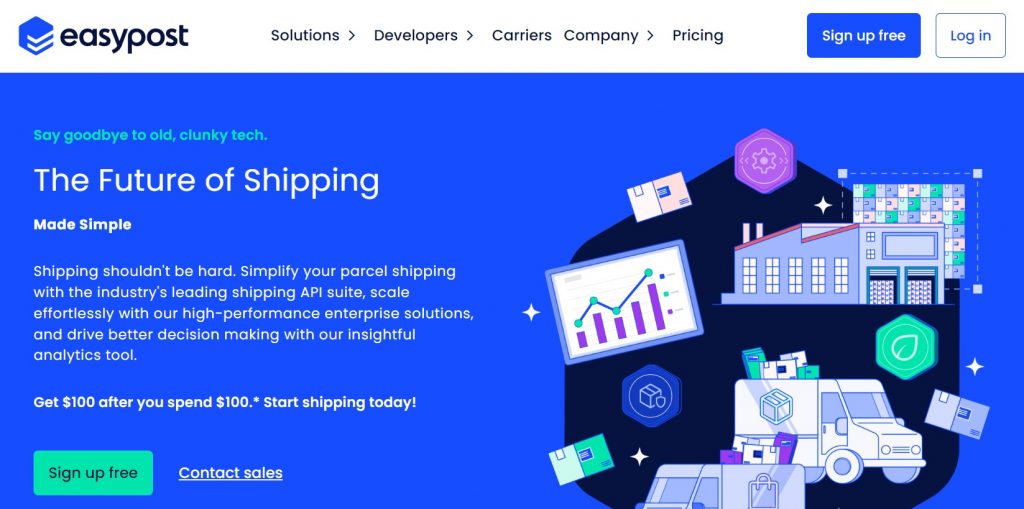
This Shipping & Logistics API, like EasyPost, offers a compelling solution for businesses to simplify and optimize their fulfillment operations. Imagine integrating a one-stop shop for shipping functionalities directly into your online store. EasyPost’s API makes this a reality. By connecting to their platform, businesses can automate tasks like generating shipping labels, comparing rates from various carriers in real-time, printing customs documents, and even scheduling pickups – all from a centralized dashboard. This not only streamlines the fulfillment process for businesses, saving them time and resources, but also empowers them to offer their customers a wider range of transparent shipping options and competitive pricing at checkout. Ultimately, Shipping & Logistics APIs like EasyPost empower businesses to streamline operations, enhance customer satisfaction with increased shipping flexibility, and potentially reduce fulfillment costs.
ShipEngine
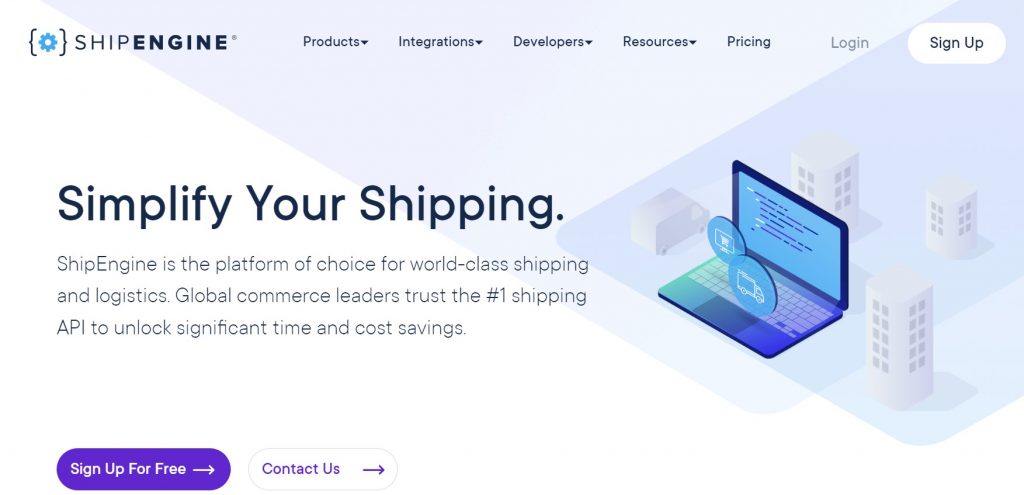
This Shipping & Logistics API, like ShipEngine, elevates e-commerce efficiency by transforming fulfillment into a seamless process. Imagine integrating a powerful shipping management system directly into your online store. ShipEngine’s API delivers just that. By connecting to their platform, businesses can automate tasks like generating shipping labels, comparing rates from a vast network of carriers in real-time, and even generating customs forms for international shipments – all within a centralized hub. This not only streamlines fulfillment workflows and frees up valuable business resources, but also empowers businesses to offer customers a wider selection of transparent shipping options and competitive pricing at checkout. Ultimately, Shipping & Logistics APIs like ShipEngine empower businesses to streamline operations, enhance customer satisfaction with increased shipping flexibility, and potentially reduce fulfillment costs.
FedEx API
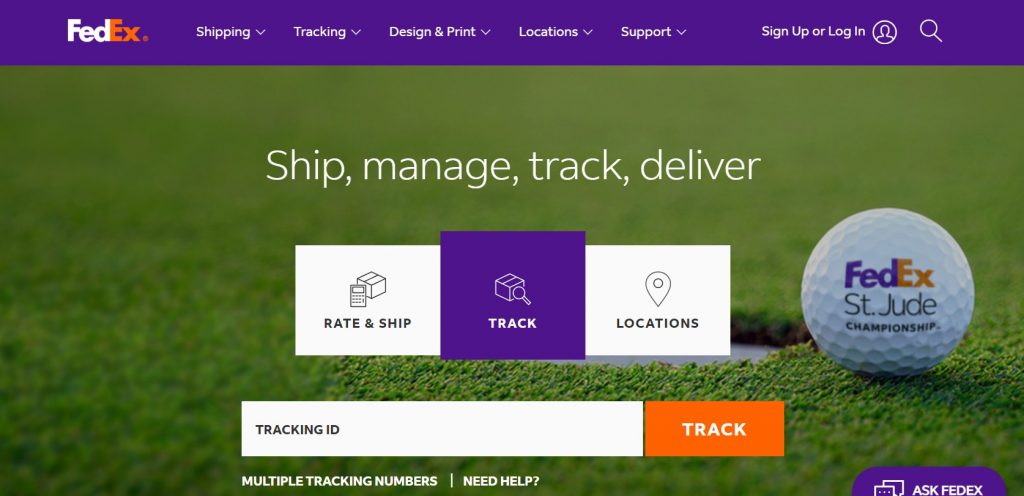
This API allows businesses to connect directly to FedEx’s vast shipping network, streamlining tasks like generating shipping labels, scheduling pickups, and tracking packages – all within their existing online store framework. FedEx Web Services empowers businesses with functionalities like real-time rate quotes, shipment tracking visibility for both businesses and customers, and the ability to handle various shipment types including express deliveries or international freight. This integration not only simplifies fulfillment for businesses but also instills trust in customers by offering a recognized and reliable shipping option at checkout. Ultimately, Shipping & Logistics APIs like FedEx Web Services empower businesses to streamline operations, enhance customer confidence with a trusted carrier, and potentially unlock efficiencies that can reduce fulfillment costs.
UPS API
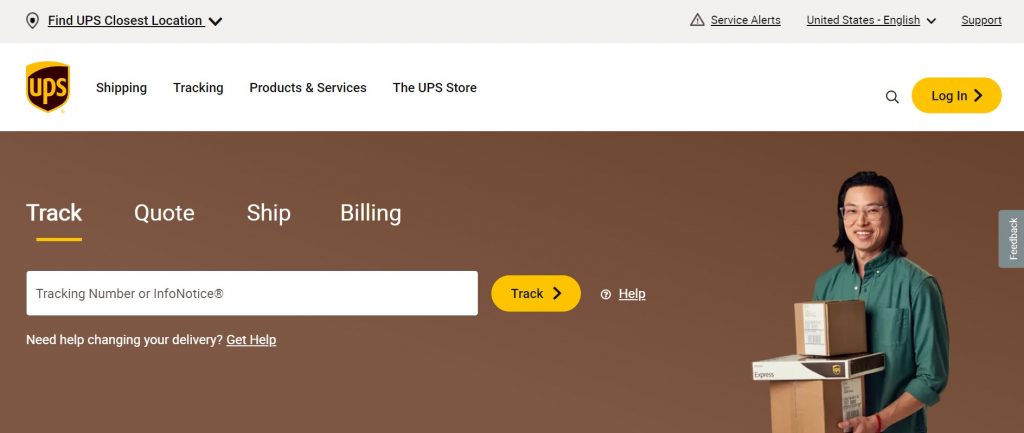
This API allows businesses to seamlessly connect their online stores to UPS’s extensive shipping network. Imagine automating tasks like generating shipping labels with negotiated rates, scheduling pickups, and tracking packages in real-time – all from within your existing platform. The UPS API empowers businesses with functionalities like multi-quote comparisons, international documentation assistance, and advanced features like Cash on Delivery options. This not only streamlines fulfillment workflows but also caters to diverse customer needs, potentially including same-day deliveries or specific packaging requirements. Ultimately, Shipping & Logistics APIs like the UPS API empower businesses to streamline operations, offer customers a wider range of flexible shipping options, and potentially unlock cost savings through negotiated rates.
DHL API
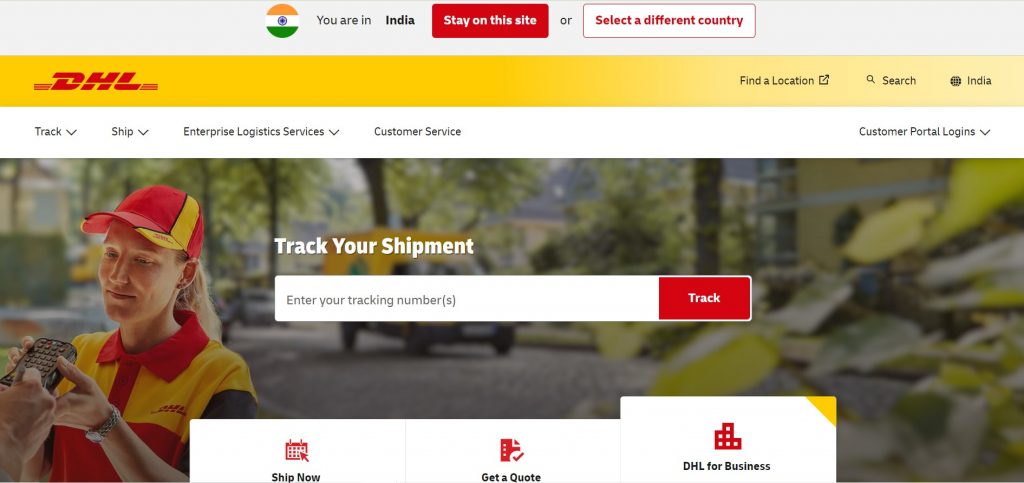
This Shipping & Logistics API, like DHL’s API, emerges as a powerful tool for businesses seeking a global shipping partner. By connecting to DHL’s extensive network through their API, businesses can seamlessly integrate international shipping functionalities directly into their online stores. Imagine automating tasks like generating customs documents, scheduling international pickups, and tracking packages across borders – all from a centralized platform within your existing system. The DHL API empowers businesses with functionalities like real-time international rate quotes, comprehensive shipment tracking visibility, and support for various shipping options tailored for international deliveries. This not only simplifies complex international fulfillment processes but also instills confidence in customers by offering a trusted and global shipping partner at checkout. Ultimately, Shipping & Logistics APIs like DHL’s API empower businesses to expand their reach to international markets, streamline international fulfillment workflows, and potentially reduce costs through efficient logistics management.
Case Study – ShipRocket
Craftify, a beloved online store specializing in unique craft supplies, faced a hurdle. Their manual shipping processes were becoming cumbersome as their business boomed. Long wait times for quotes, error-prone manual label creation, and limited tracking options were hindering their ability to provide a smooth customer experience. To address these challenges, Craftify turned to ShipRocket, a leading Shipping & Logistics API. Integrating ShipRocket’s API transformed Craftify’s fulfillment process. By connecting directly to their online store, ShipRocket automated tasks like generating shipping labels, comparing rates from multiple carriers in real-time, and scheduling pickups. This not only saved Craftify valuable time and resources but also empowered them to offer customers a wider range of transparent shipping options at checkout. The improved efficiency allowed Craftify to focus on product curation and customer service. Additionally, ShipRocket’s robust tracking features enhanced customer satisfaction by providing real-time shipment visibility. This seamless integration with ShipRocket’s API empowered Craftify to scale their business effectively, ensuring a delightful customer experience that fueled their continued growth.
Location Services
Google Maps
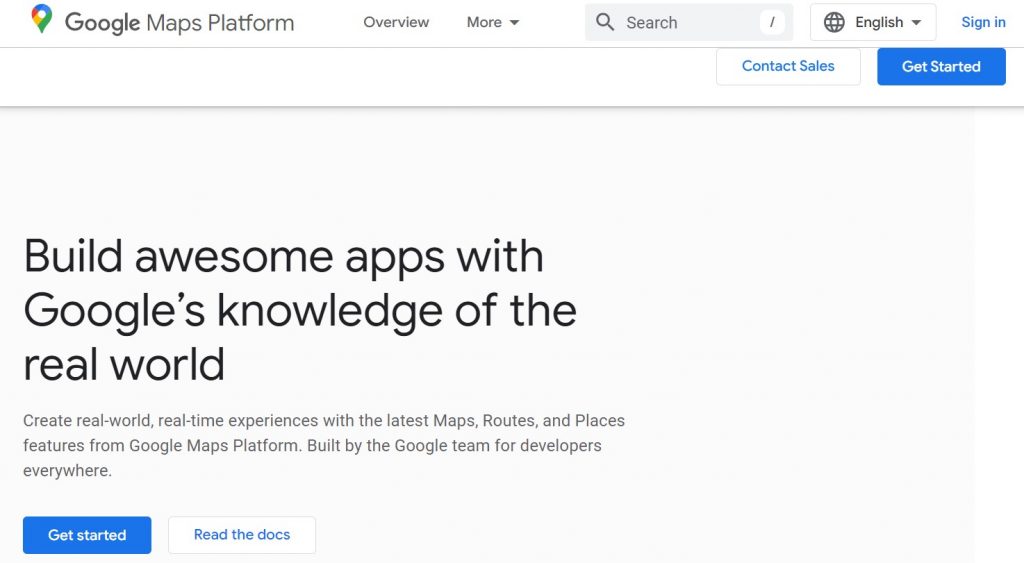
This Location Services API, like Google Maps Platform Location APIs, empowers developers to create feature-rich and geographically aware experiences in their mobile applications. Imagine integrating real-time location data directly into your app. Google Maps Platform Location APIs provide functionalities like geocoding (transforming addresses into coordinates) and reverse geocoding (converting coordinates into addresses), allowing users to seamlessly search for nearby places or share their location. This not only enhances user convenience but also unlocks a variety of location-based features. Developers can leverage these APIs to create apps that offer location-specific recommendations, enable ride-hailing services, or even implement augmented reality experiences. Ultimately, Location Services APIs like Google Maps Platform empower developers to create innovative and user-centric applications that leverage the power of location data.
MapQuest
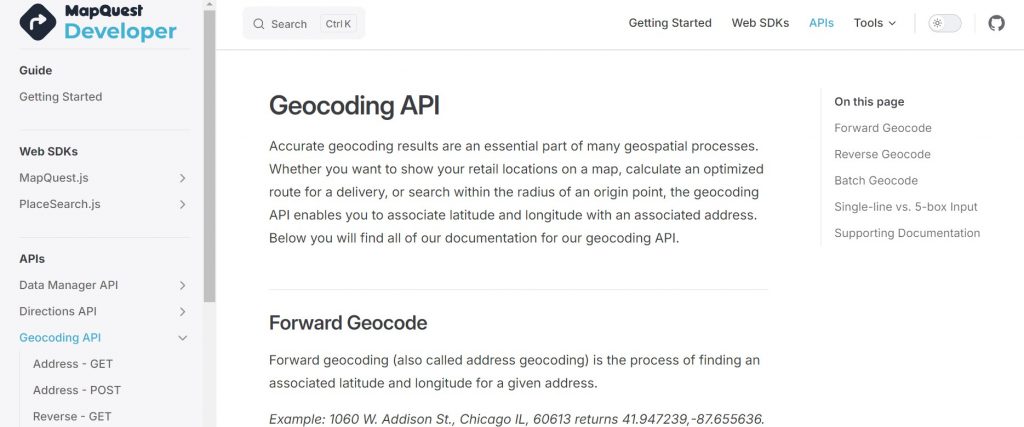
This Location Services API, like MapQuest’s Geocoding API, empowers developers to create innovative and user-centric applications that leverage the power of location data. It goes beyond simply displaying maps, enabling features that enhance user experience. Imagine empowering users to search for nearby points of interest or share their location directly within your app. MapQuest’s Geocoding API provides functionalities like transforming addresses into precise coordinates (geocoding) and vice versa (reverse geocoding). This not only streamlines user experience but also unlocks a variety of location-based features. Developers can leverage this API to create apps that offer targeted recommendations based on user location, enable convenient ride-hailing services, or even integrate location-based games and augmented reality experiences. Ultimately, Location Services APIs like MapQuest’s Geocoding API empower developers to create innovative and user-centric applications.
Case Study – Google Maps
SpoonSpoon, a popular restaurant discovery app, was struggling to keep its location data fresh and user recommendations relevant. Their reliance on static user-generated content meant users often encountered outdated information or missed out on hidden gems. To address this, SpoonSpoon integrated Google Maps Platform Location Services APIs into their app.
This integration transformed the user experience. By leveraging Google Maps Platform’s real-time location data, SpoonSpoon could display accurate restaurant locations and update information dynamically. Furthermore, APIs like Places allowed SpoonSpoon to tap into Google’s vast database of businesses, providing users with comprehensive details, high-quality photos, and user reviews for a wider range of restaurants. This not only ensured users discovered the perfect spot for their cravings but also empowered them with richer and more up-to-date information to make informed decisions. Ultimately, Google Maps Platform Location Services APIs transformed SpoonSpoon into a more reliable and feature-rich app, leading to a surge in user engagement and restaurant discovery.
Social Media Integration
Facebook Graph API
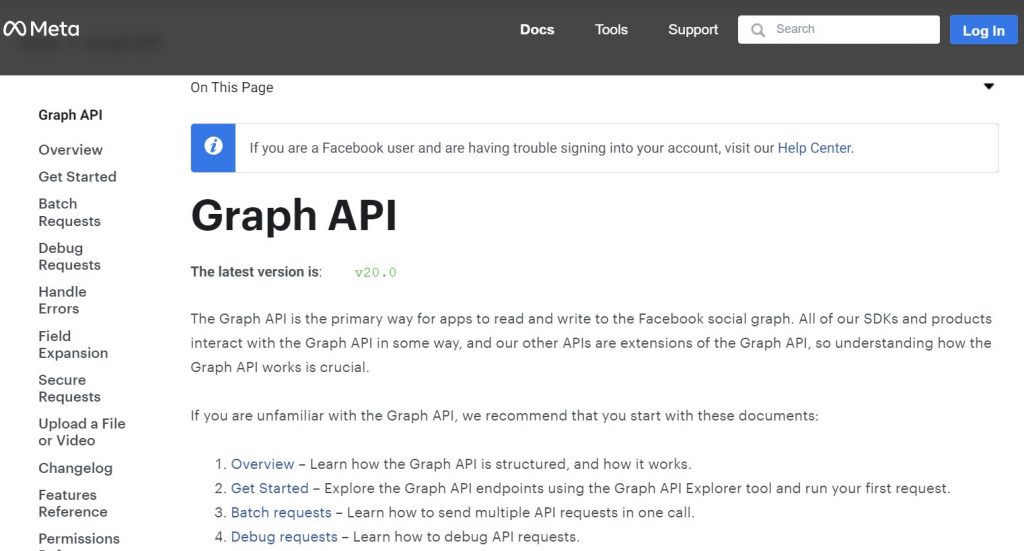
This Social Media Integration API, like Facebook Graph API, offers a powerful bridge for applications to connect with the vast Facebook social network. Imagine seamlessly integrating Facebook login functionality directly into your app. The Facebook Graph API empowers developers with functionalities like user authentication, allowing users to log in with their existing Facebook credentials. This not only streamlines the user experience by eliminating the need for separate account creation but also fosters a sense of familiarity and trust. Furthermore, the Facebook Graph API grants access to a user’s public profile information (with their permission), enabling features like personalized recommendations or social sharing within your application. Ultimately, Social Media Integration APIs like Facebook Graph API empower developers to create applications that leverage the power of social connections, fostering user engagement and potentially expanding their reach within the Facebook ecosystem.
Twitter API
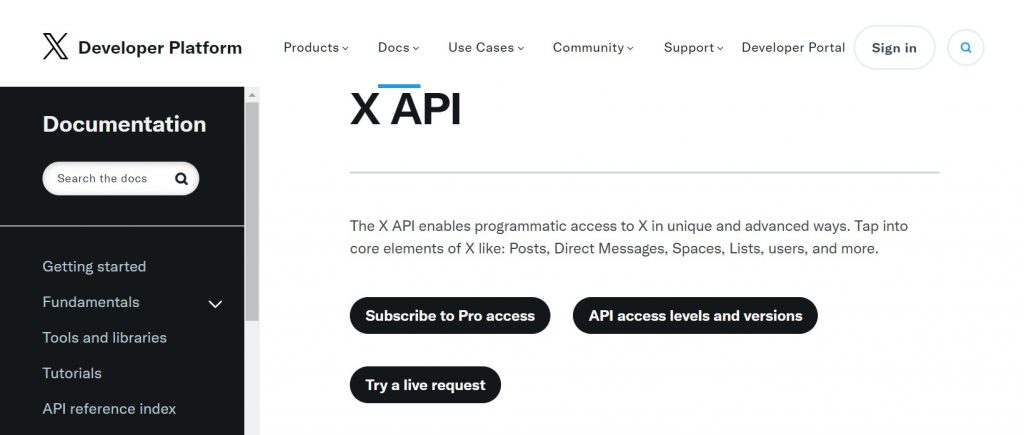
This Social Media Integration API, like the Twitter API, acts as a gateway for applications to tap into the power of real-time conversations. Imagine incorporating a live Twitter feed directly within your app, keeping users engaged with trending topics and relevant discussions. The Twitter API empowers developers with functionalities like user authentication, allowing users to log in with their existing Twitter credentials for a seamless experience. This not only streamlines user onboarding but also fosters trust by leveraging a familiar login method. Furthermore, the Twitter API grants access to public tweets and trends, enabling developers to integrate features like real-time tweet streams, hashtag discovery, or social sharing of content within their application. Ultimately, Social Media Integration APIs like the Twitter API empower developers to create applications that leverage the power of public conversations, fostering user engagement and potentially expanding their reach within the Twittersphere.
LinkedIn API
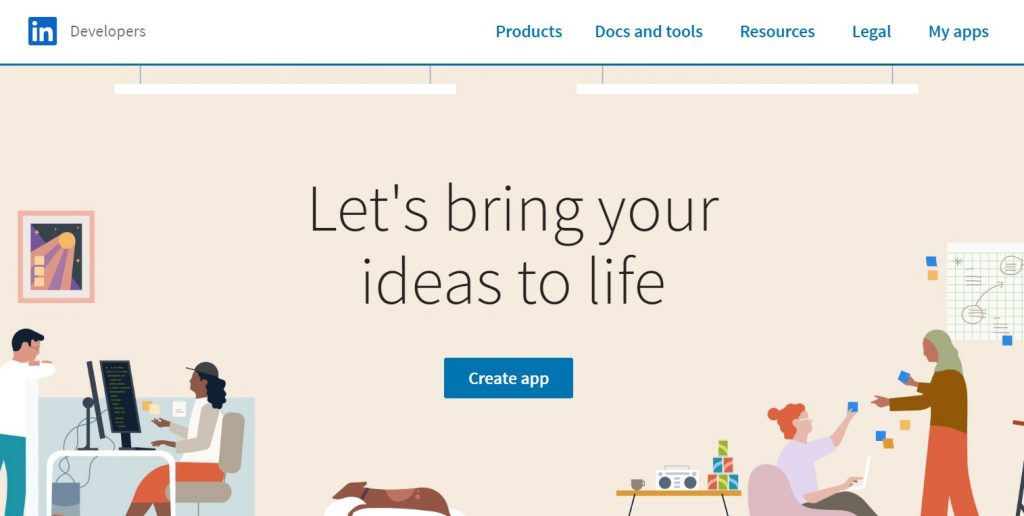
The LinkedIn API empowers developers with functionalities like user authentication, allowing users to leverage their existing LinkedIn credentials for a smooth login experience. This not only streamlines onboarding but also fosters trust by using a familiar login method. Furthermore, the LinkedIn API grants access to a user’s public profile information (with permission), enabling features like personalized job recommendations, professional skill endorsements, or even building a network within your application. Ultimately, Social Media Integration APIs like the LinkedIn API empower developers to create applications that harness the power of professional connections, fostering user engagement and potentially expanding their reach within the LinkedIn ecosystem.
Instagram Graph API
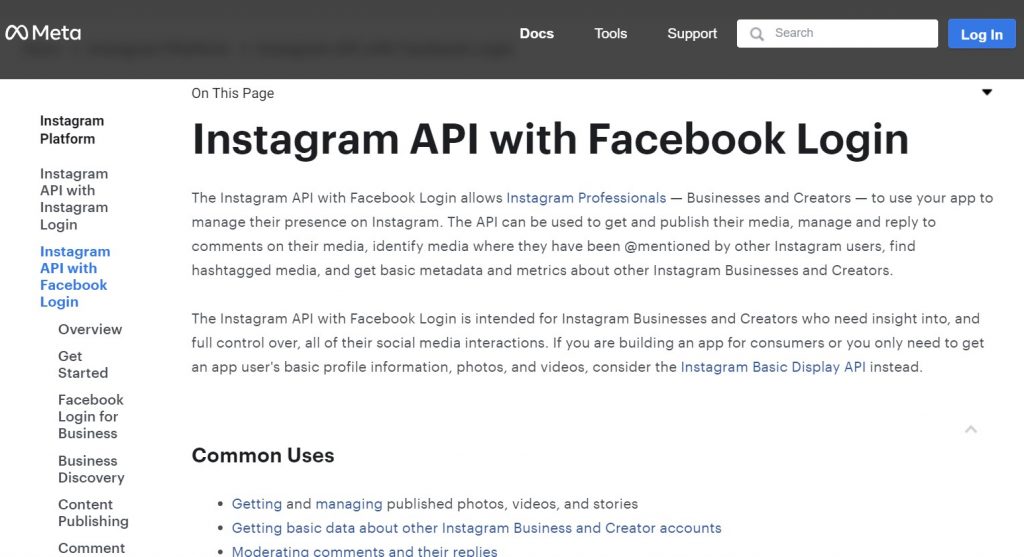
The Instagram Graph API provides functionalities like user authentication, allowing users to log in with their existing Instagram credentials for a familiar and streamlined experience. This not only reduces signup friction but also fosters trust by leveraging a recognized login method. Furthermore, the Instagram Graph API grants access to a user’s public profile information and media (with permission), enabling features like personalized filter recommendations based on user-liked photos, or the ability to directly share edited photos back to Instagram within your app. Ultimately, Social Media Integration APIs like the Instagram Graph API empower developers to create applications that leverage the power of visual connections, fostering user engagement and potentially expanding their reach within the vast Instagram ecosystem.
Generative AI APIs
OpenAI API
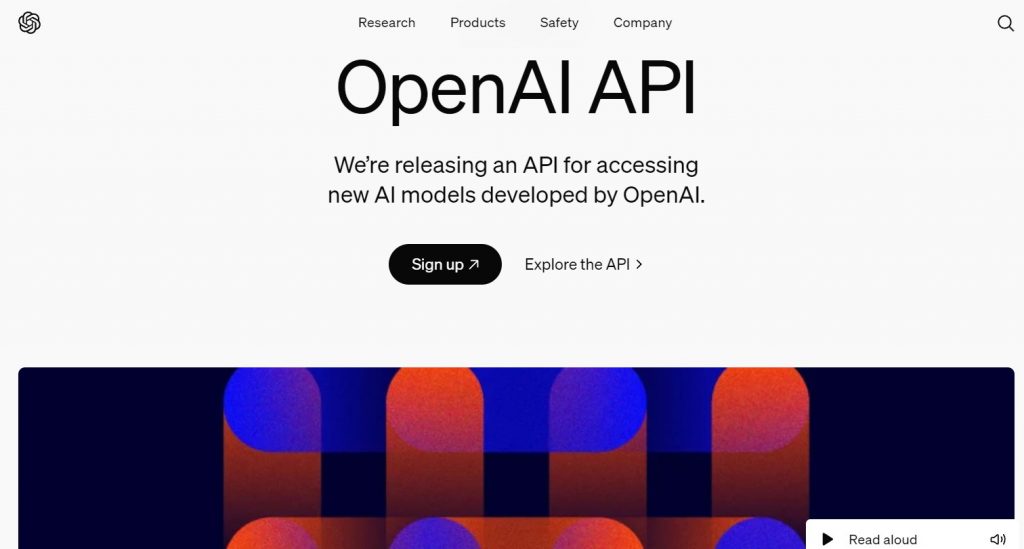
This Generative AI API, like OpenAI’s API, unlocks a new frontier for developers by empowering applications to generate creative text formats or captivating visuals on demand. OpenAI’s API offers functionalities like text-based prompts and image descriptions. By feeding these prompts to the API, developers can generate human-quality content, like writing product descriptions, crafting engaging social media posts, or even creating unique image variations based on user preferences. This not only streamlines content creation workflows but also opens doors to innovative features. Developers can leverage Generative AI APIs to personalize user experiences, automate content generation tasks, or even create interactive applications powered by AI-generated responses. Ultimately, Generative AI APIs like OpenAI’s API empower developers to push the boundaries of creativity and functionality within their applications.
DeepAI
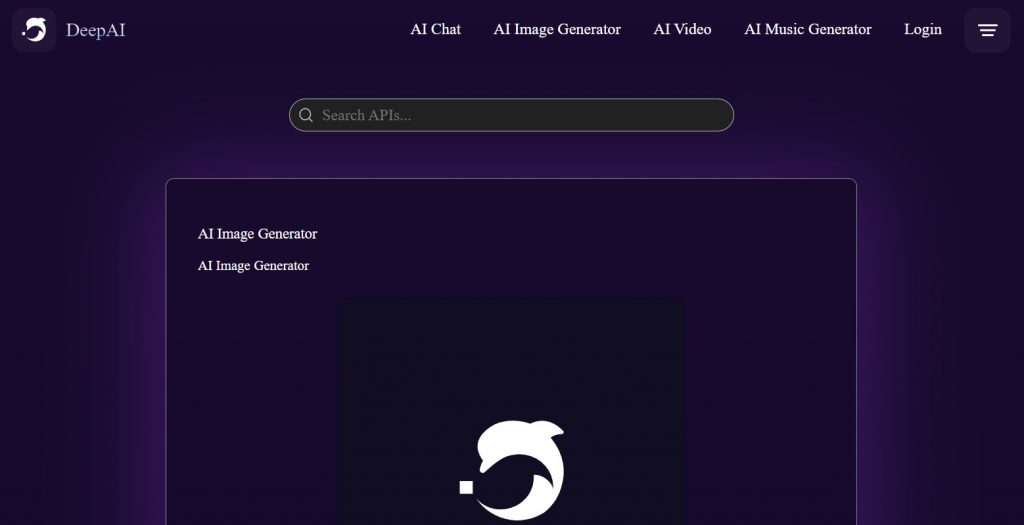
This Generative AI API, like DeepAI, empowers developers to breathe life into creative visions. Imagine equipping your application to generate never-before-seen images or craft unique variations based on user input. DeepAI’s API offers functionalities like text-to-image generation and image editing tools. By providing the API with descriptive prompts, developers can unlock a world of creative possibilities, from generating product mockups based on user preferences to crafting stunning social media graphics or even creating variations of existing images with artistic flair. This not only streamlines design workflows but also opens doors to innovative features. Developers can leverage Generative AI APIs to personalize user experiences, automate image creation tasks, or even implement interactive design tools powered by AI-generated visuals. Ultimately, Generative AI APIs like DeepAI empower developers to push the boundaries of creativity and design within their applications.
RunwayML

This Generative AI API, like RunwayML, empowers developers to democratize access to cutting-edge creative tools. Imagine integrating a platform within your application that allows users to create professional-grade videos or manipulate images with just a few clicks. RunwayML’s API offers functionalities like pre-trained AI models for various creative tasks. By integrating these models, developers can empower users to perform actions like generating realistic product explainer videos with customizable avatars, applying artistic effects to photos, or even editing videos with AI-powered tools – all within your application. This not only opens doors to user-driven creative exploration but also fosters a new level of accessibility to professional-grade creative processes. Ultimately, Generative AI APIs like RunwayML empower developers to democratize creativity and embed powerful AI tools directly within their applications.
IBM Watson AI
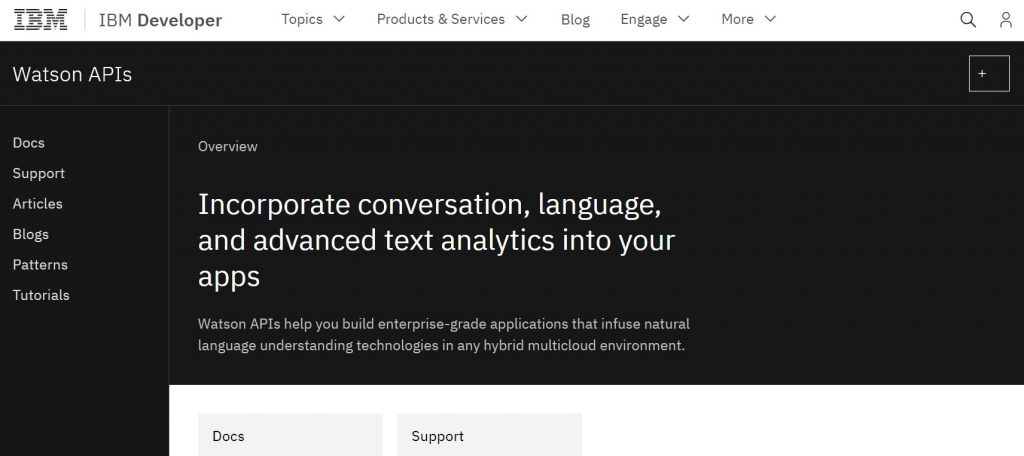
This API goes beyond just creative content generation. Imagine empowering your application to tackle a wider range of tasks using AI’s power. IBM Watson Studio offers functionalities like text-to-speech conversion, language translation, and even basic code generation based on user prompts. This not only streamlines development workflows but also unlocks innovative features. Developers can leverage Generative AI APIs to create applications with enhanced accessibility features, personalize user experiences based on language preference, or even automate routine coding tasks. Ultimately, Generative AI APIs like IBM Watson Studio empower developers to leverage AI’s versatility to improve application functionality and user experience.
Case Study – Google Maps
Busy bloggers like Sarah Jones who have time constraints often hindered her ability to consistently publish high-quality articles. To overcome these hurdles, Sarah turned to OpenAI’s Generative AI API. Integrating OpenAI’s API transformed Sarah’s content creation process. By feeding the API with topic ideas and writing prompts, Sarah could generate drafts for blog posts, product descriptions, or even social media captions in a fraction of the time. OpenAI’s ability to produce human-quality text allowed Sarah to focus on refining the content and adding her unique voice. This not only saved her valuable time but also sparked new creative ideas and helped her overcome writer’s block. Furthermore, the API’s ability to adapt to her writing style ensured the generated content remained consistent with her brand identity. Ultimately, OpenAI’s Generative AI API empowered Sarah to streamline her workflow, overcome creative roadblocks, and publish engaging content more consistently, leading to a significant boost in blog traffic and reader engagement.
Entertainment & Media
YouTube Data API
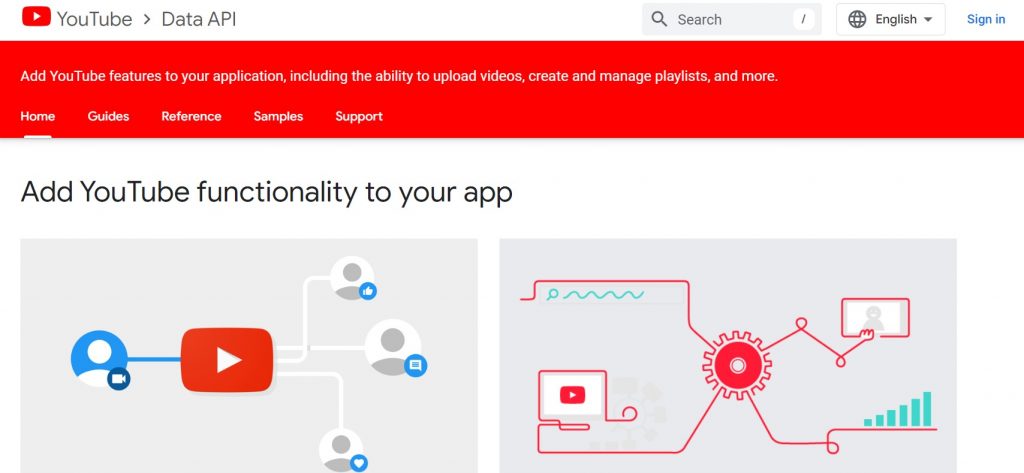
The YouTube Data API grants access to a vast library of video data, including search functionalities, video details, and playlist information. By leveraging this API, developers can create features like personalized video recommendations based on user listening habits, curated playlists themed around specific genres, or even enable users to directly add YouTube videos to their music queues. This not only enhances user engagement by providing a seamless video discovery experience but also allows developers to expand their entertainment offerings within a single application. Ultimately, Entertainment & Media APIs like the YouTube Data API empower developers to bridge the gap between different media formats, fostering a more enriching and multifaceted user experience.
IMDB API

The IMDb API provides functionalities like movie details, cast and crew information, user reviews, and even trivia. By leveraging this API, developers can create features like informative overlays displayed while browsing movies, personalized recommendations based on a user’s watch history and ratings, or even interactive quizzes to test viewers’ movie knowledge. This not only enhances user engagement by providing deeper dives into movie content but also allows developers to create a more well-rounded entertainment experience within their applications. Ultimately, Entertainment & Media APIs like the IMDb API empower developers to unlock the vast potential of movie data, fostering a more informative and engaging user experience.
Twitch API
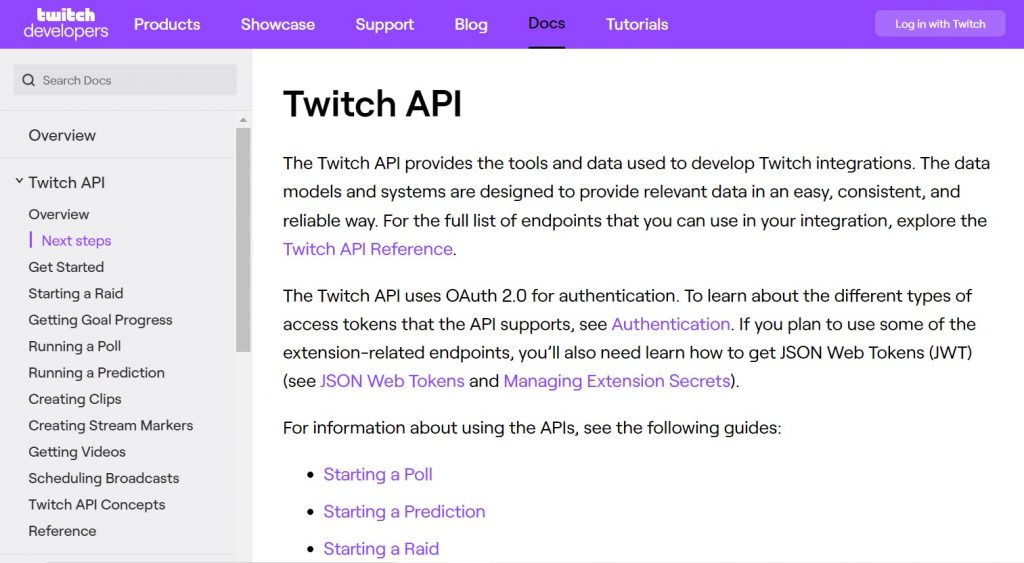
The Twitch API grants access to a vast library of live stream data, including search functionalities, channel information, and game details. By leveraging this API, developers can create features like curated live stream listings based on popular e-sports titles, personalized recommendations for viewers based on their game preferences, or even enable users to directly follow their favorite streamers within your app. This not only enhances user engagement by providing a seamless live stream discovery experience but also allows developers to expand their content offerings and cater to the interests of the gaming community. Ultimately, Entertainment & Media APIs like the Twitch API empower developers to create a more enriching and interactive entertainment experience for fans of live streaming content.
Spotify Web API
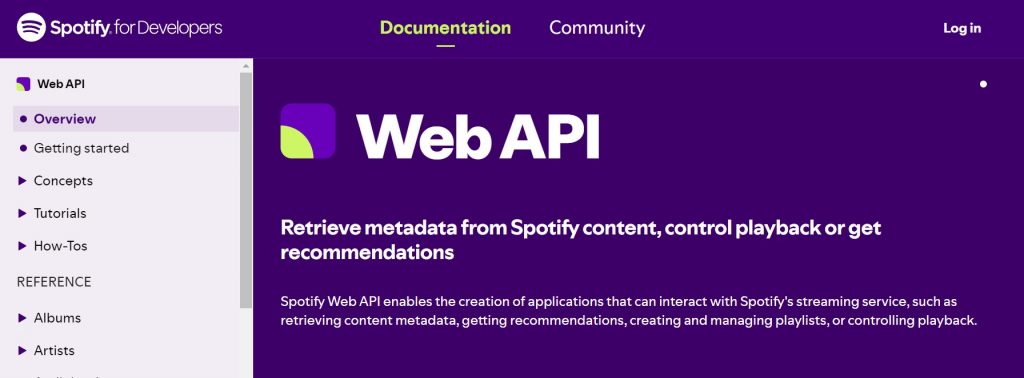
The Spotify Web API grants access to a treasure trove of music data, including search functionalities, artist information, and track recommendations. By leveraging this API, developers can create features like curated workout playlists based on genre and tempo, personalized music suggestions tailored to a user’s activity level, or even enable users to share their Spotify listening habits with friends within the app. This not only enhances user engagement by providing a dynamic music experience but also allows developers to create fitness apps that cater to individual preferences and fuel workout motivation. Ultimately, Entertainment & Media APIs like the Spotify Web API empower developers to bridge the gap between music and fitness, fostering a more enjoyable and personalized exercise experience.
TMDB API
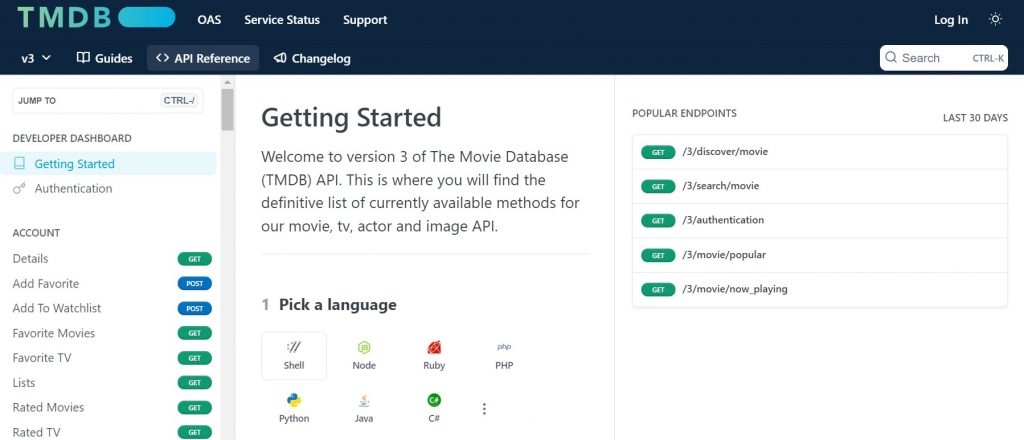
TMDb’s API provides functionalities like searching by title, genre, or cast, detailed information about shows and movies, and even user ratings and reviews. By leveraging this API, developers can create features like community-driven watchlists or recommendations, personalized suggestions based on a user’s social connections or viewing habits, or even interactive forums for users to discuss their favorite shows. This not only enhances user engagement by fostering a social aspect to entertainment discovery but also allows developers to create feature-rich applications that cater to the interests of a broader entertainment community. Ultimately, Entertainment & Media APIs like TMDb empower developers to unlock the potential of a vast dataset, fostering a more interactive and socially-connected entertainment experience.
OMDB API
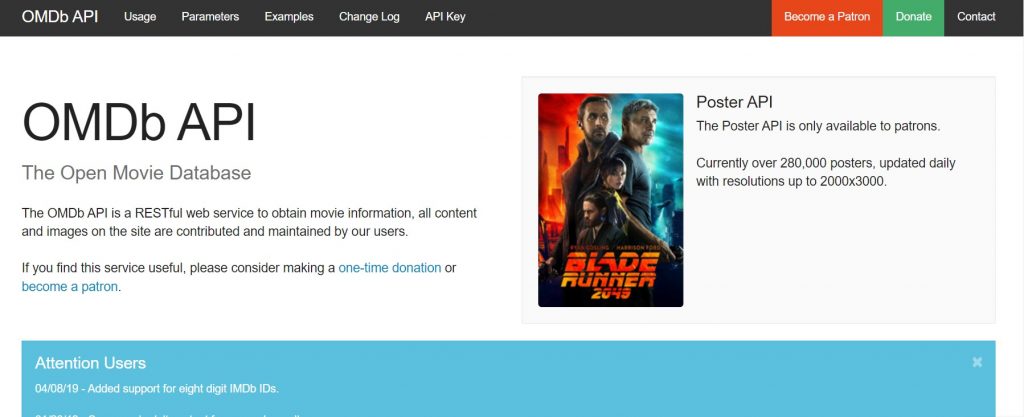
The OMDb API provides functionalities like movie details retrieval by title or ID, including plot summaries, cast listings, and user ratings. By leveraging this API, developers can create features like auto-populated movie information based on user reviews, easy access to plot details to enhance discussions, or even trivia quizzes based on movie data. This not only streamlines the user experience by providing relevant information at a glance but also allows developers to create more engaging entertainment applications with minimal integration effort. Ultimately, Entertainment & Media APIs like OMDb empower developers to leverage a comprehensive movie database, fostering a more informative and interactive user experience.
Case Study -Youtube Data API
Fitify, a fitness app known for its generic workout plans, was struggling to keep users engaged. Repetitive routines led to a decline in user motivation and ultimately, cancellations. To address this, Fitify turned to the YouTube Data API, an Entertainment & Media API.
The integration of the YouTube Data API transformed Fitify’s content library. By leveraging the API’s search functionalities and vast video data, Fitify could curate personalized workout playlists tailored to individual user preferences and fitness goals. Users could now search for specific exercises or browse curated playlists based on difficulty level, muscle groups targeted, or even preferred workout styles like yoga or HIIT. The ability to access high-quality instructional videos from qualified trainers on YouTube, directly within the Fittify app, empowered users to find exercises they enjoyed and ensured proper form to avoid injury. This data-driven approach not only boosted user engagement but also yielded impressive results. Fitify reported a significant increase in average workout duration and user retention, solidifying their position as a leader in the personalized fitness app market.
Security & Authentication
Auth0
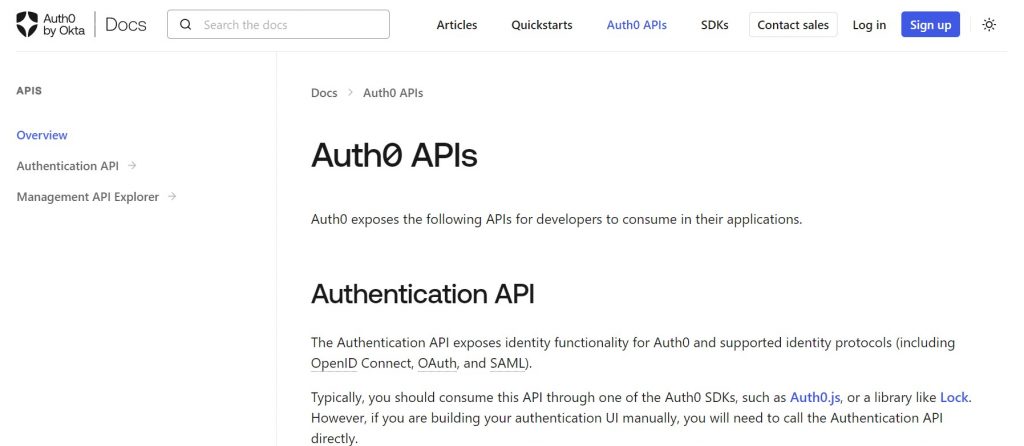
This Security & Authentication API, like Auth0, simplifies login processes for applications by offering robust security features. Imagine a fitness tracker app that allows users to log in with their existing social media credentials. By integrating an API like Auth0, developers can implement functionalities like social media logins and multi-factor authentication. This not only streamlines the user experience by eliminating the need for separate account creation but also prioritizes security by offering an extra layer of protection against unauthorized access. Ultimately, Security & Authentication APIs empower developers to build trust with users by ensuring their sensitive data is protected with robust login protocols.
OAuth
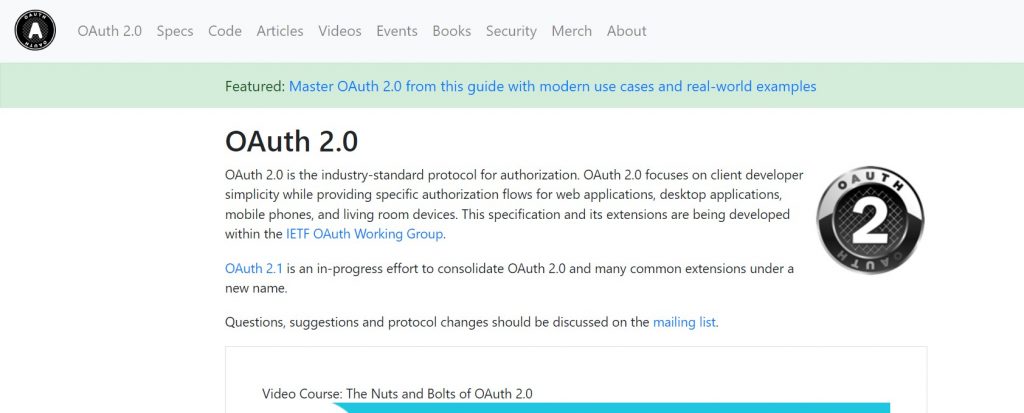
OAuth acts as a secure bridge between applications, enabling functionalities like social logins and access token generation. Users can leverage their existing social media credentials to log in, eliminating the need for separate accounts and password fatigue. More importantly, OAuth ensures user data remains secure by providing access tokens instead of actual passwords. These tokens grant limited permissions to specific data, minimizing security risks. Ultimately, Security & Authentication APIs like OAuth empower developers to create secure and user-friendly applications, fostering trust and streamlining the login process.
LastPass API
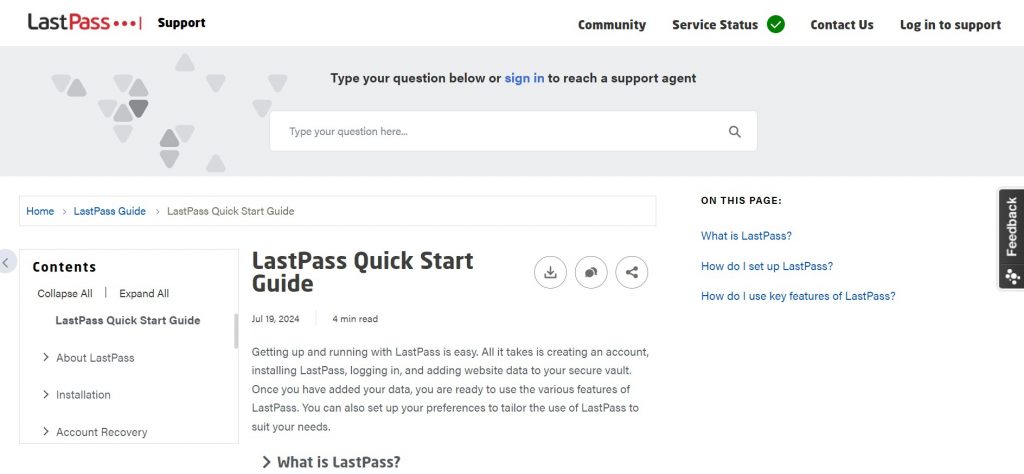
The LastPass Business API allows for automated user provisioning and de-provisioning within LastPass, streamlining the onboarding and offboarding processes. Additionally, the API offers functionalities for managing groups and access controls, ensuring only authorized personnel have access to specific applications. Ultimately, Security & Authentication APIs like the LastPass Business API empower organizations to streamline user access management and prioritize security within their business applications.
Okta
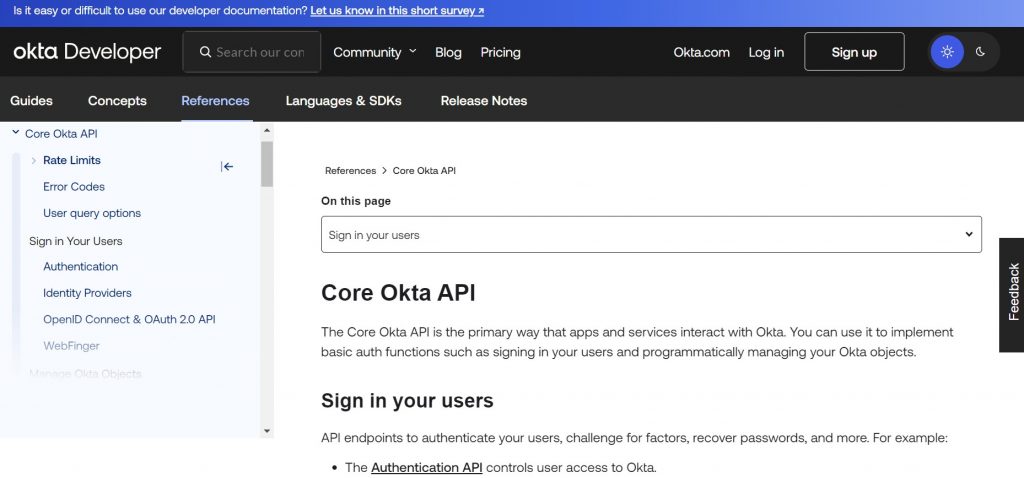
Security & Authentication APIs like Okta offer a comprehensive toolkit for developers. Imagine an organization where employees need seamless access to a variety of cloud-based applications. Okta’s API acts as a central hub, enabling functionalities like single sign-on (SSO) and multi-factor authentication (MFA). With SSO, users can log in once and access all authorized applications without the hassle of multiple passwords. MFA adds an extra layer of security by requiring a second verification step, like a code from a smartphone app, to ensure only authorized users gain access. Okta’s API also empowers administrators with user lifecycle management tools, allowing them to easily provision, manage, and de-provision user access across various applications. Ultimately, Security & Authentication APIs like Okta empower organizations to streamline access control, enhance security, and simplify user management for a more secure and efficient work environment.
JWT(JSON Web Tokens)
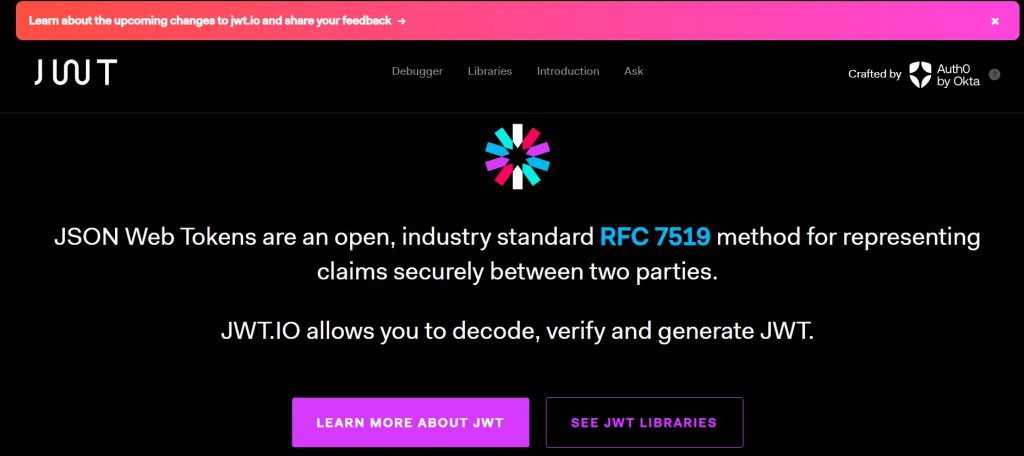
JWT acts as a secure authorization mechanism, containing essential information like user ID and expiration time. When a user logs in, the server generates a JWT and sends it back to the user’s device. With subsequent requests to access secure data, the application sends the JWT along with the request. The server can then decode and verify the JWT, ensuring the user’s identity and access rights before granting access. This approach not only streamlines authentication by eliminating frequent login prompts but also offers advantages like stateless verification, reducing server load. Ultimately, Security & Authentication APIs like JWT empower developers to create secure and efficient authorization systems within their applications.
Translation APIs
Google Translate API
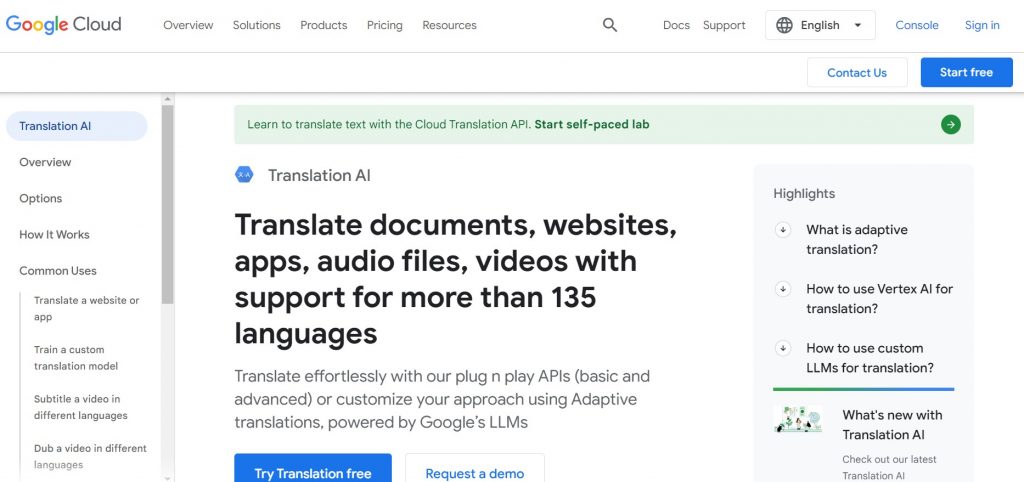
Translation APIs like Google Translate API empower applications to bridge the communication gap between users worldwide. Imagine a travel app that allows users to instantly translate restaurant menus or street signs encountered on their adventures. Google Translate API offers functionalities like translating text between a vast array of languages. By integrating this API, developers can create features like real-time translation of user-generated content, website localization for a global audience, or even voice translation tools to enhance communication during international travel. This not only fosters a more inclusive user experience but also opens doors to a broader market reach for applications. Ultimately, Translation APIs like Google Translate API empower developers to create applications that can bridge language barriers and connect people across the globe.
Microsoft Translator Text API
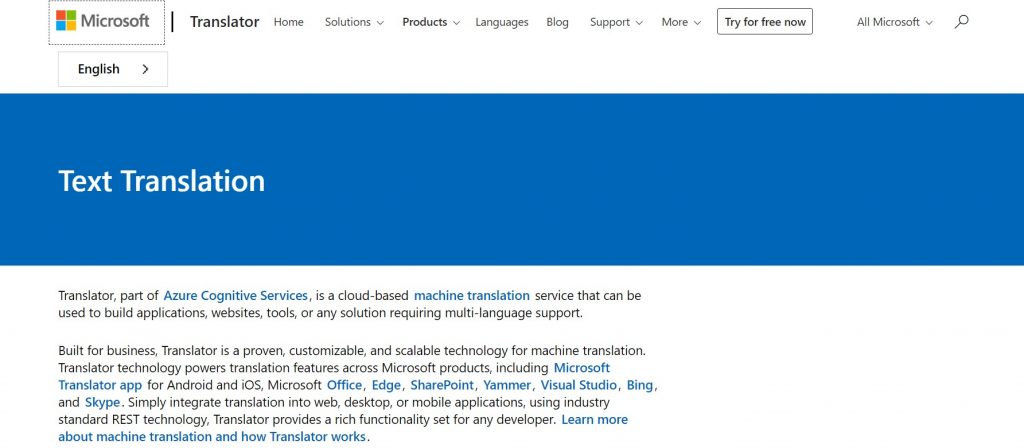
Translation APIs like Microsoft Translator Text API empower developers to break down language barriers within their applications. Imagine a social media platform that allows users to seamlessly translate posts and comments, fostering global conversations. Microsoft Translator Text API offers functionalities like translating text across a vast number of languages, with support for various dialects and text formats. By integrating this API, developers can create features like real-time translation of user-generated content, automatic language detection for incoming messages, or even sentiment analysis that considers cultural nuances. This not only fosters a more inclusive user experience where everyone can participate in the conversation but also opens doors to a wider and more diverse user base. Ultimately, Translation APIs like Microsoft Translator Text API empower developers to create applications that bridge language gaps and connect people from all corners of the world.
Weather & Environmental
OpenWeatherMap
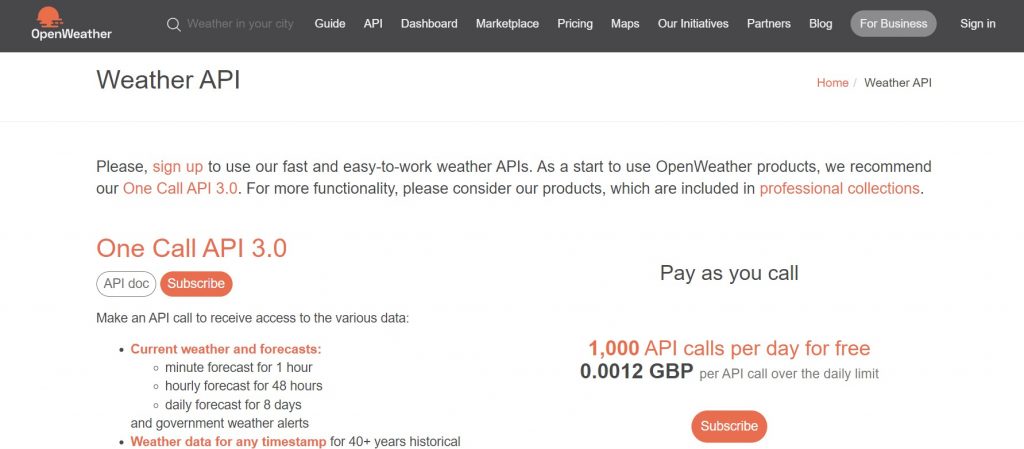
Weather & Environmental APIs like OpenWeatherMap offer a treasure trove of data for developers seeking to enrich their applications with real-time insights. Imagine a mobile gardening app that provides personalized watering recommendations based on your local weather conditions. OpenWeatherMap’s API grants access to a vast library of weather data, including current and forecast temperatures, precipitation levels, and even humidity. By leveraging this API, developers can create features like location-specific watering schedules for plants, weather alerts for potential frost or heat damage, or even integrate real-time weather conditions into gardening tutorials. This not only empowers users to make informed decisions about their plants’ care but also fosters a deeper connection with their local environment. Ultimately, Weather & Environmental APIs like OpenWeatherMap empower developers to create applications that bridge the gap between technology and the natural world, promoting environmental awareness and responsible plant care.
Weatherstack
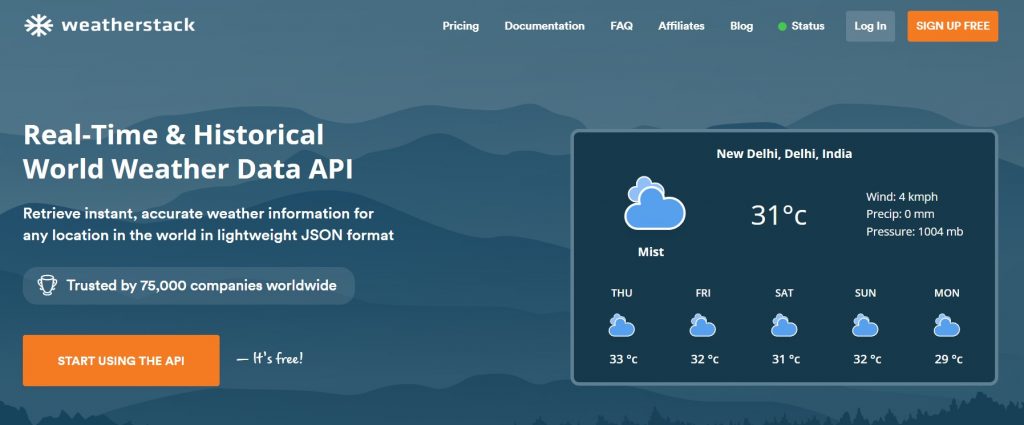
Weather & Environmental APIs like Weatherstack offer a powerful tool for developers seeking granular insights. Imagine a hyperlocal news app that displays real-time weather conditions alongside breaking news stories, allowing users to make informed decisions about their day. Weatherstack’s API goes beyond basic temperature and precipitation. It provides functionalities like access to weather alerts, UV index data, and even detailed hourly forecasts. By integrating this API, developers can create features like location-specific weather warnings for potential storms or high UV days, integrate real-time weather conditions into traffic updates, or personalize news feeds based on weather conditions relevant to the user’s area. Ultimately, Weather & Environmental APIs like Weatherstack empower developers to create applications that leverage the power of hyper-local weather data, fostering a deeper understanding of users’ immediate environment and enabling them to make informed decisions based on real-time weather conditions.
ClimaCell
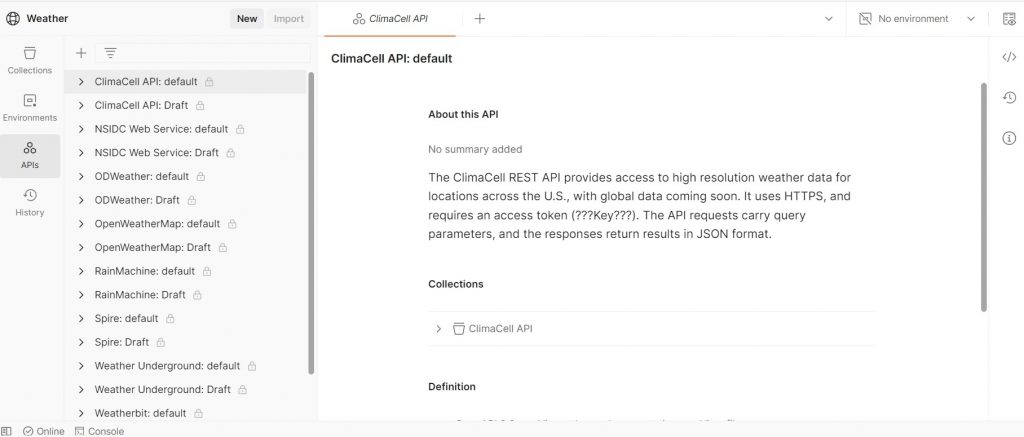
Weather & Environmental APIs like ClimaCell offer a powerful upgrade for developers seeking precision environmental data. Imagine a weather app that not only displays real-time conditions but also predicts hyper-localized downpours minutes before they hit your exact location. ClimaCell’s API goes beyond basic weather data, offering functionalities like minute-by-minute forecasts, precipitation intensity predictions, and even microclimate variations across a city. By integrating this API, developers can create features like personalized rain alerts for your specific street corner, real-time weather conditions displayed on delivery tracking apps, or even integrate weather data into asthma management apps to help users avoid potential triggers. Ultimately, Weather & Environmental APIs like ClimaCell empower developers to create applications that leverage the power of high-resolution weather data, fostering a new level of environmental awareness and enabling users to make hyper-local weather-informed decisions.
NASA API
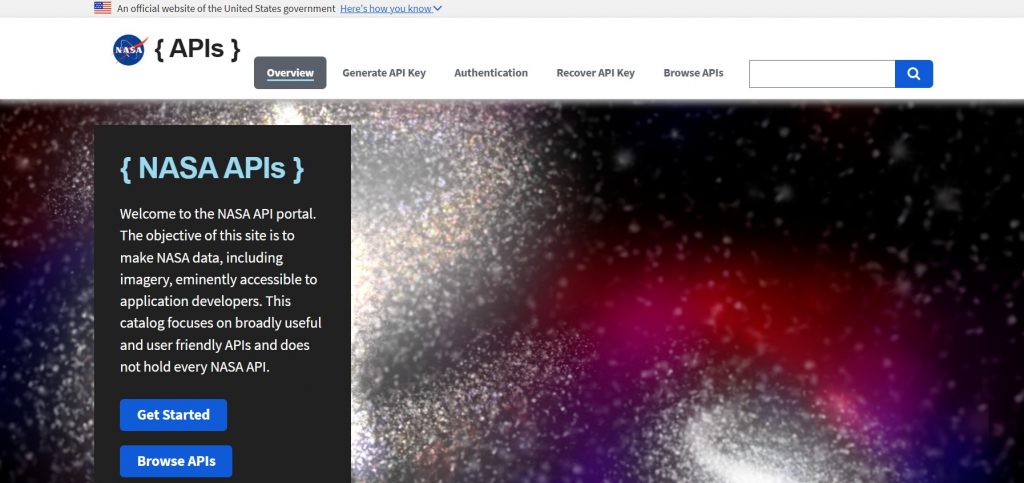
This Weather & Environmental API, like NASA’s Earth Observation APIs, offers a window into the complexities of our planet. While NASA itself might not have a dedicated weather API, some of their Earth Observation offerings can be used to glean environmental insights. Imagine a climate monitoring app that allows users to visualize global air quality data alongside weather patterns. By integrating an API like NASA’s Earth Observing System Data and Information System (EOSDIS), developers can access functionalities like real-time air quality measurements and historical satellite imagery. This allows for features like pollution maps overlaid on weather forecasts, personalized air quality alerts based on user location, or even educational tools that showcase the impact of weather patterns on air quality. Ultimately, Weather & Environmental APIs empower developers to create applications that bridge the gap between weather and other environmental factors, fostering a more holistic understanding of our planet’s interconnected systems.
Conclusion
The vast landscape of APIs offers developers a powerful toolkit to bridge the gap between technology and various aspects of our lives. From fostering creativity with Generative AI APIs to streamlining communication with Translation APIs, these APIs empower developers to create applications that are not only functional but also enrich user experiences in unique ways. As technology continues to evolve, so too will the capabilities of APIs, pushing the boundaries of what’s possible and paving the way for a future where applications seamlessly integrate with our daily routines and the world around us.


